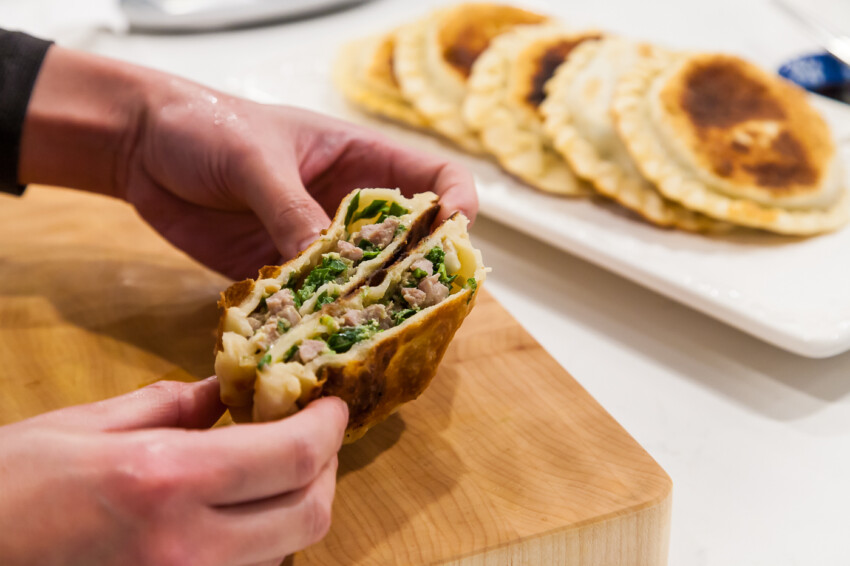
Jiu Cai He Zi (Chinese Chive Pockets)
March 11, 2023 Print
I just realized that I’ve been sharing quite a few recipes involving flour lately. Many of the recipes relate to the festive holidays we just celebrated, like the Chinese New Year/Lunar New Year, the Chinese lantern festival, and the Beginning of Spring. Now that my kids are old enough to start remembering holidays and traditions, I try to make a point to not only celebrate American holidays but also important Chinese holidays. I want to make sure I can pass down some of my culture and traditions to my kids.
My grandparents like to make Chinese chive pockets or jiu cai he zi (韭菜盒子) during major holidays or family gatherings. After I came to the United States, my maternal grandmother would make these yummy pocket pies every time I went back to visit her in China. So when I see Chinese chive pockets, I think of my dear grandma.
Chinese chive pockets or jiu cai he zi (韭菜盒子) are also known sometimes as chive dumplings, chive pancakes, or even chive pocket pies. The name comes from a rough translation of the Chinese words. Jiu cai refers to Chinese chives. And he zi roughly translates to “box” or “pocket,” which gives us the name Chinese chive pocket pies.
Most families in Northern China have their own version of Chinese chive pocket pies. These pocket pies are made with some combinations of Chinese chives, eggs, pork, and vermicelli. Some are big; some are small; some are round; and some are half-moon shaped. But regardless of how they are made, they are always delicious!
In my own family, on my mom’s side, the Chinese chive pocket pies can be as big as a large plate and are made with Chinese chives, eggs, and pork. But on my dad’s side, the Chinese chive pocket pies are about the size of a hand, and are made with non-meat ingredients like Chinese chives, eggs, and vermicelli. I made my own version by adapting both of my grandparent’s versions. I make them using Chinese chives, eggs, and pork as the filling (like my mom’s side) but I make them about the size of a hand (like my dad’s side).
If you really like Chinese chives, also known as garlic chives, you might also like my Chinese Chives, Pork, and Shrimp Dumplings, or Chinese Chive, Pork, and Bean Sprout Stirfry recipes.
Preparation Time: ~2.5 hours
Total Time: ~3 hours
Servings: 6 small pocket pies
Ingredients:
Main:
- 1/3 lb (~150g) Chinese chives (also known as garlic chives)
- 1/2 lb (~225g) pork shoulder meat or pork belly 1
- 1 teaspoon minced ginger
- 1/2 teaspoon kosher salt
- 1 teaspoon light soy sauce
- 1 teaspoon Chinese cooking wine
- 1 large egg
- 1 tablespoon sesame oil
- 1 tablespoon vegetable oil
- Some Chinese black vinegar (a.k.a. Chinkiang vinegar or Zhenjiang vinegar)
Dough:
- 2 cups of all purpose flour 2
- 1/4 teaspoon kosher salt or 1/8 teaspoon table salt
- 1 cup very hot water
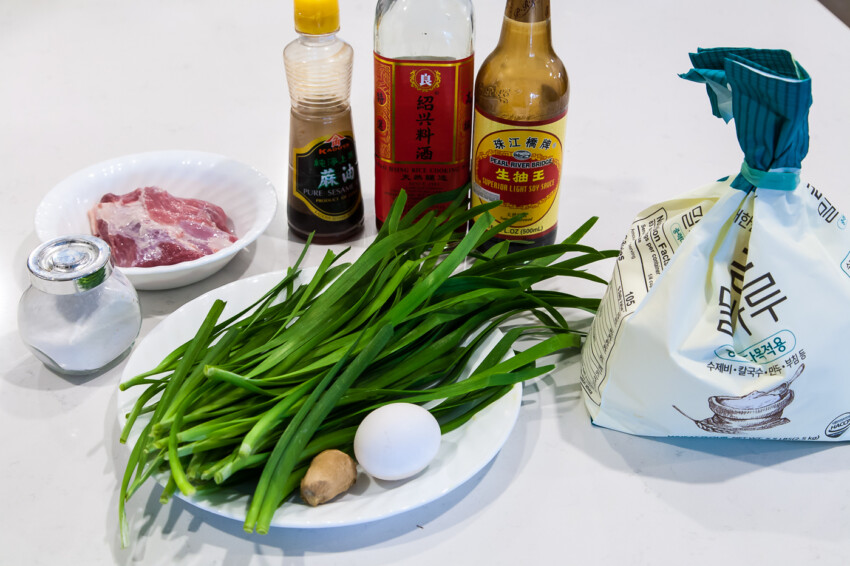
Preparation:
- In a large mixing bowl, mix 2 cups of flour with 1/4 teaspoon of kosher salt. Slowly pour in 1 cup of very hot water (in parts, not all at once).3 While pouring, gather the flour with a pair of chopsticks and stir either clockwise or counterclockwise. When the dough becomes cool to touch, knead with one hand. If dough is too dry , add one teaspoon of water at a time. If the dough is too sticky, add some loose flour. Knead until the dough is no longer sticky and the surface is relatively smooth: about 10 minutes. Put the dough in a bowl and cover with a lid or damp towel. Let it rest for about 1.5 hours. After 1.5 hours, knead again for another 5 minutes. Cover with the same lid or damp towel. Let it rest for at least another 30 minutes.
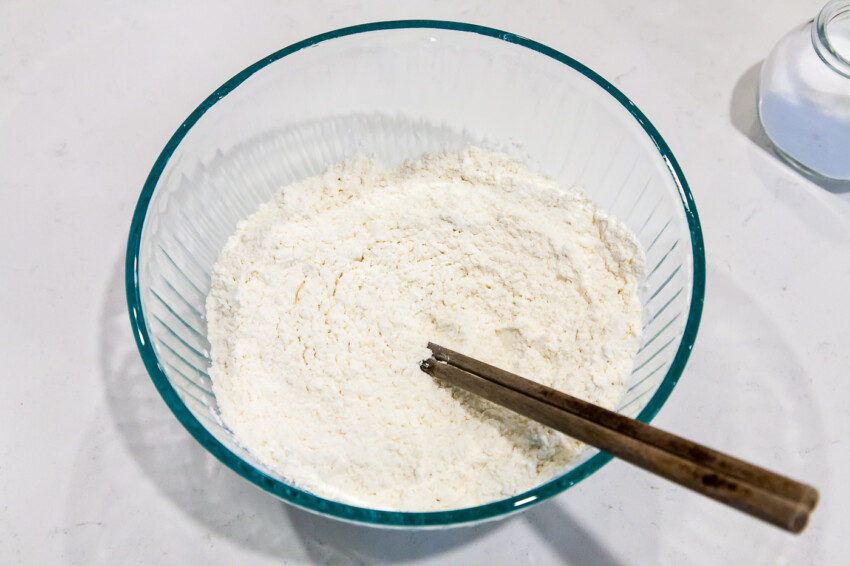
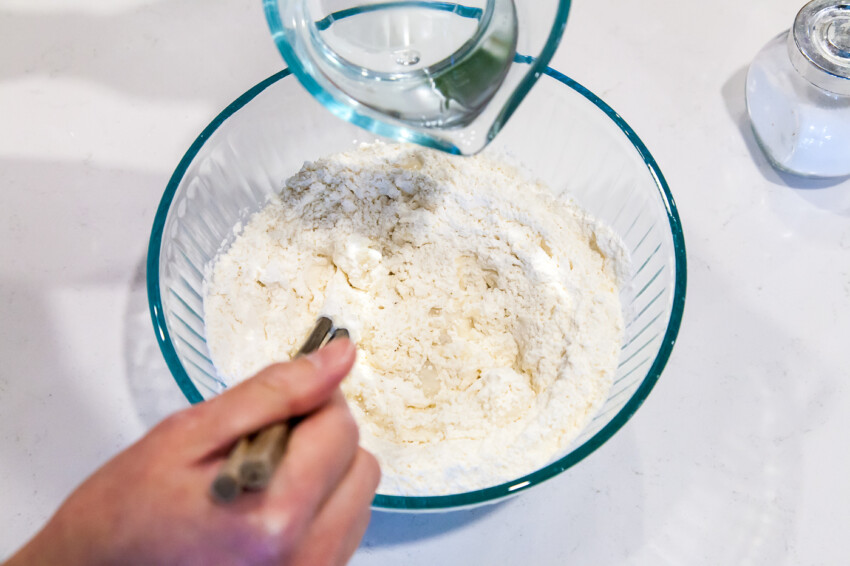
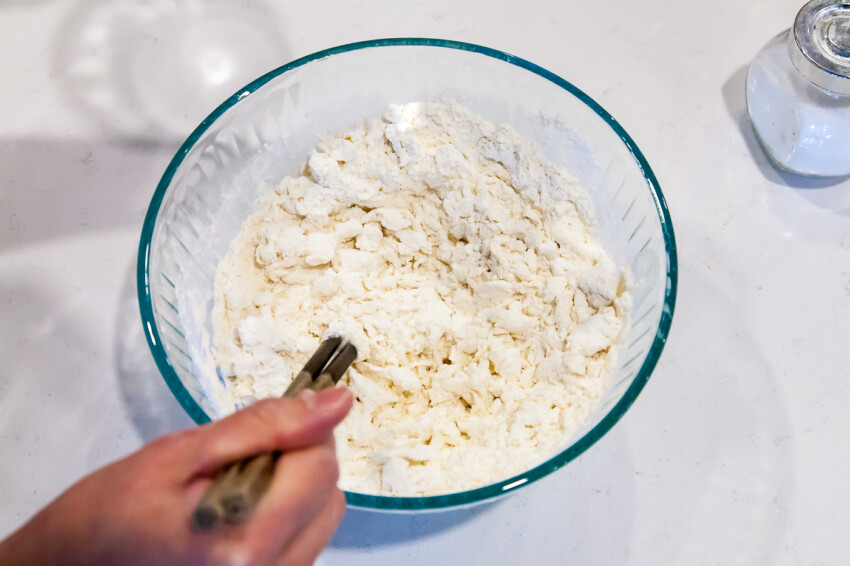
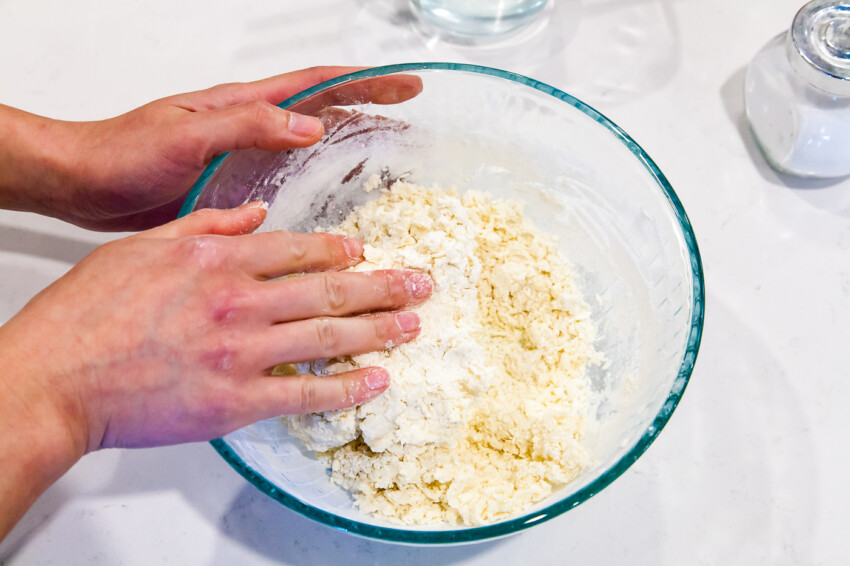
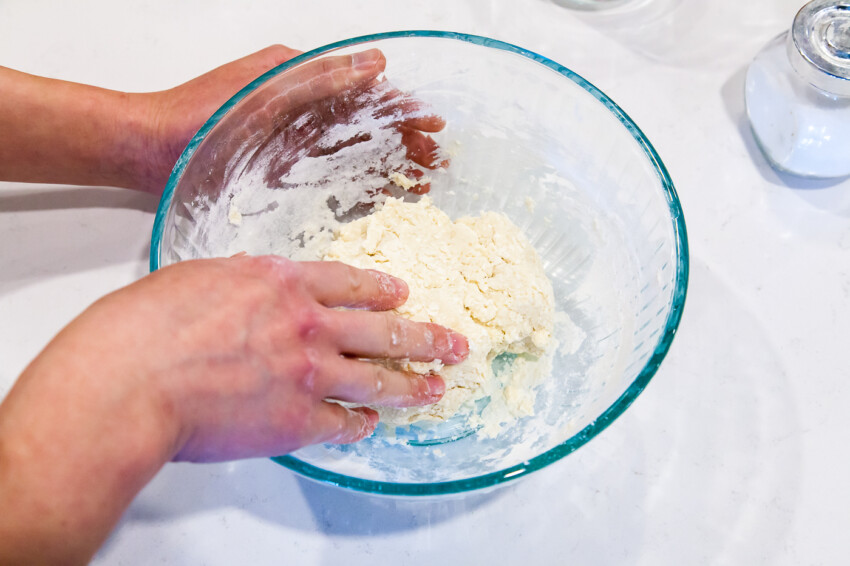
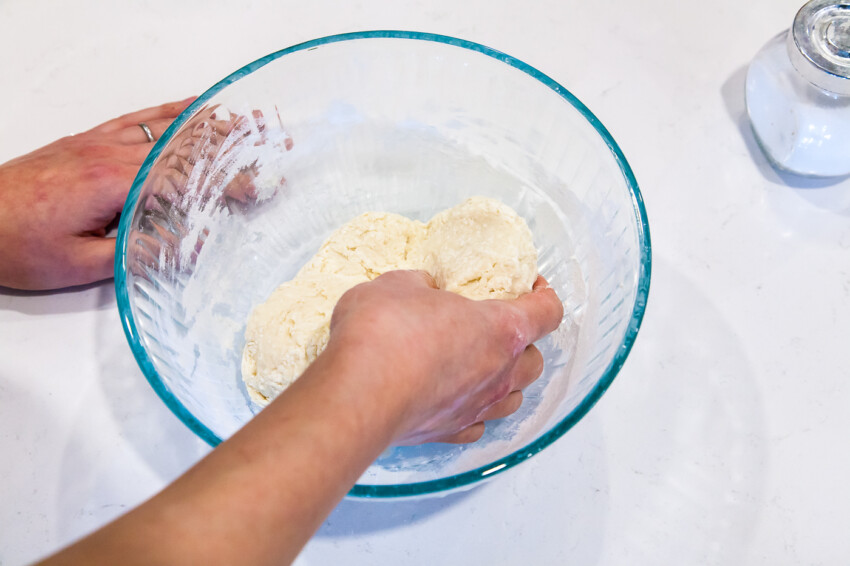
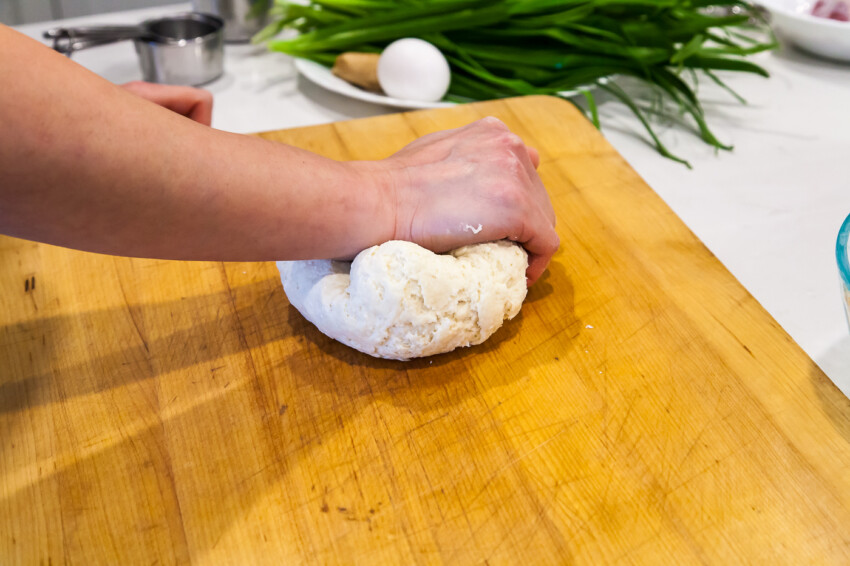
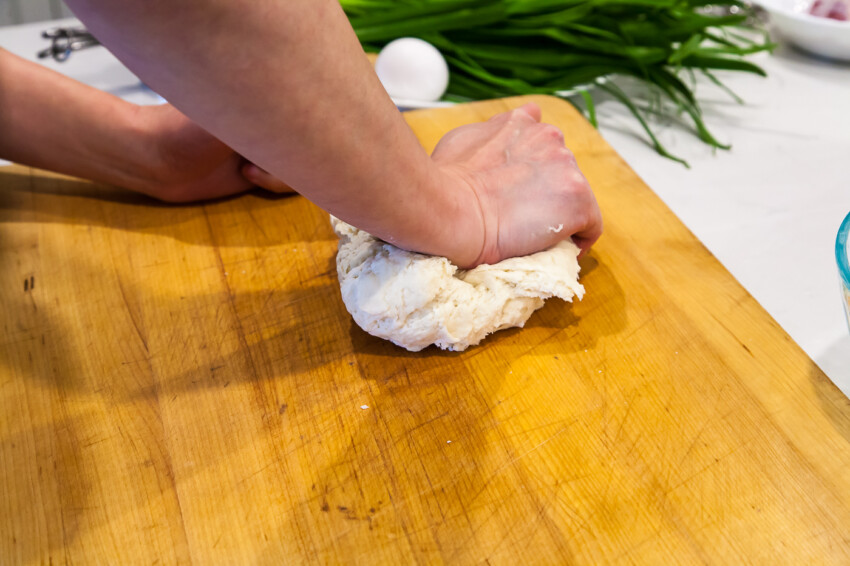
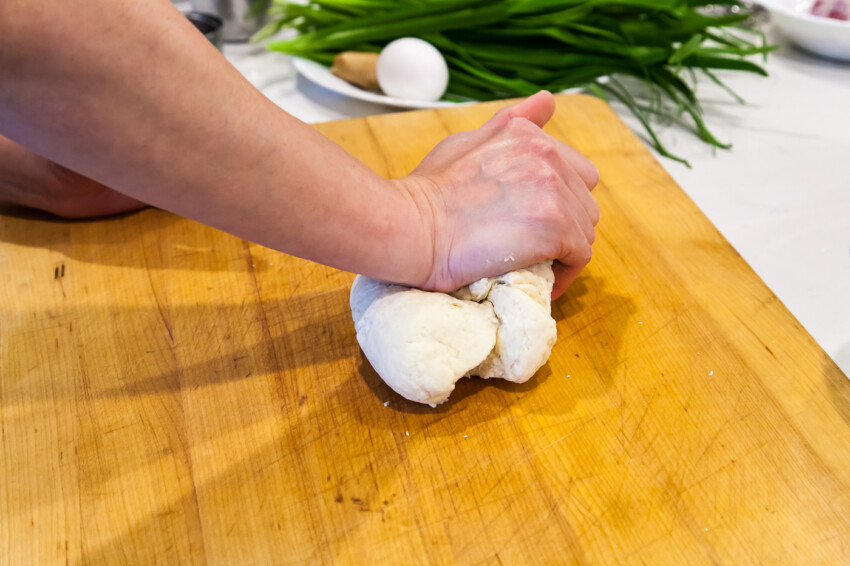
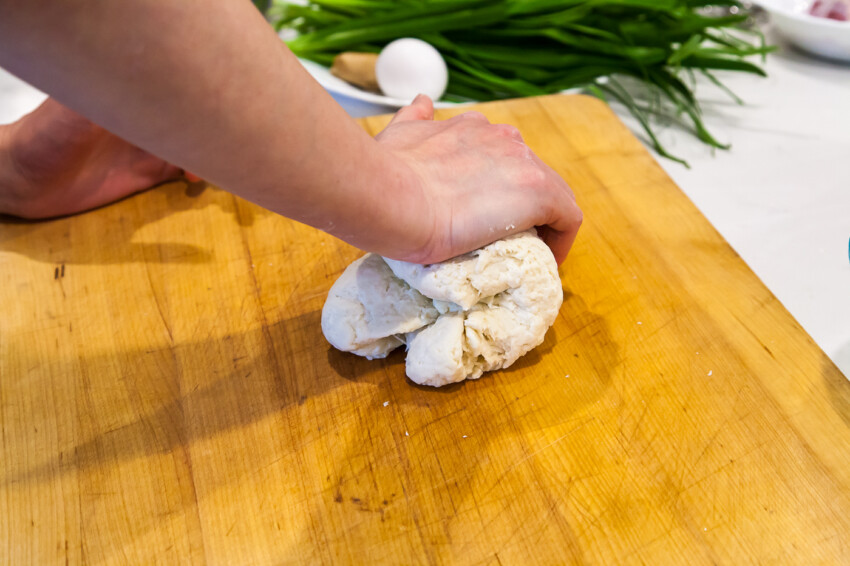
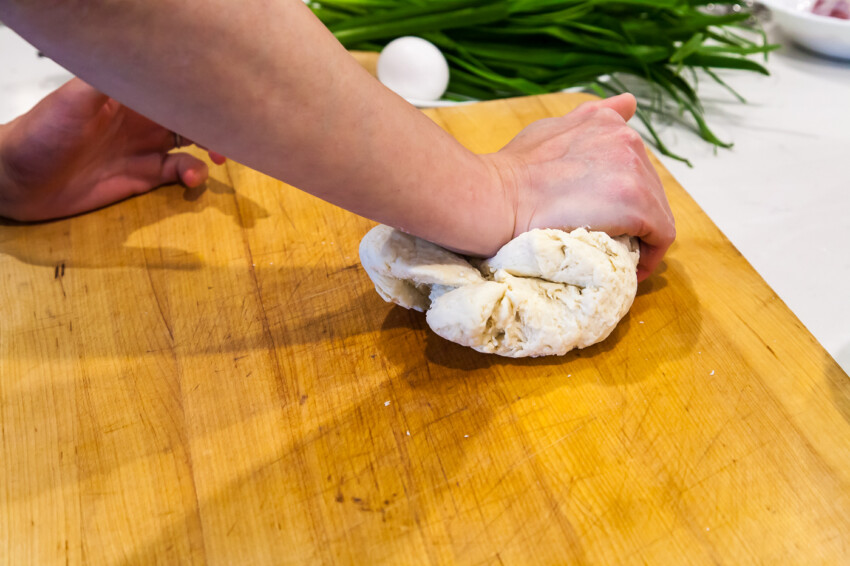
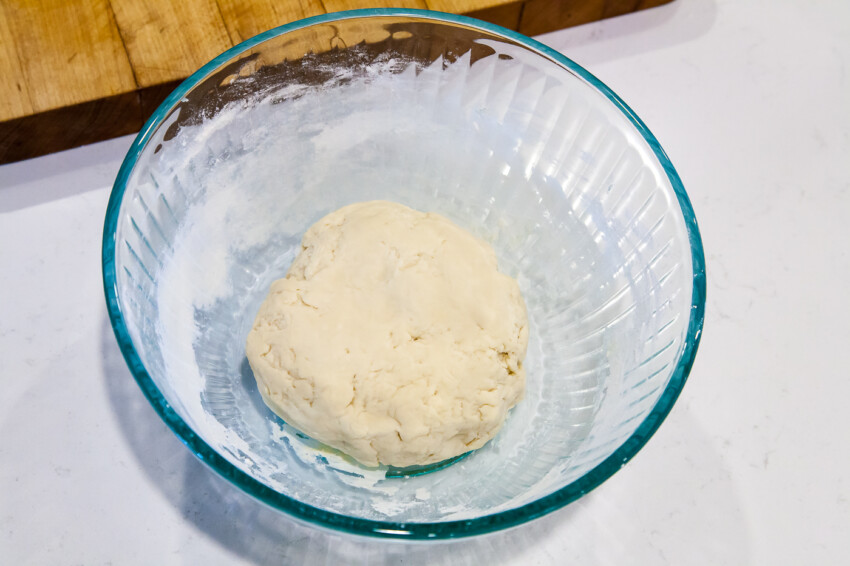
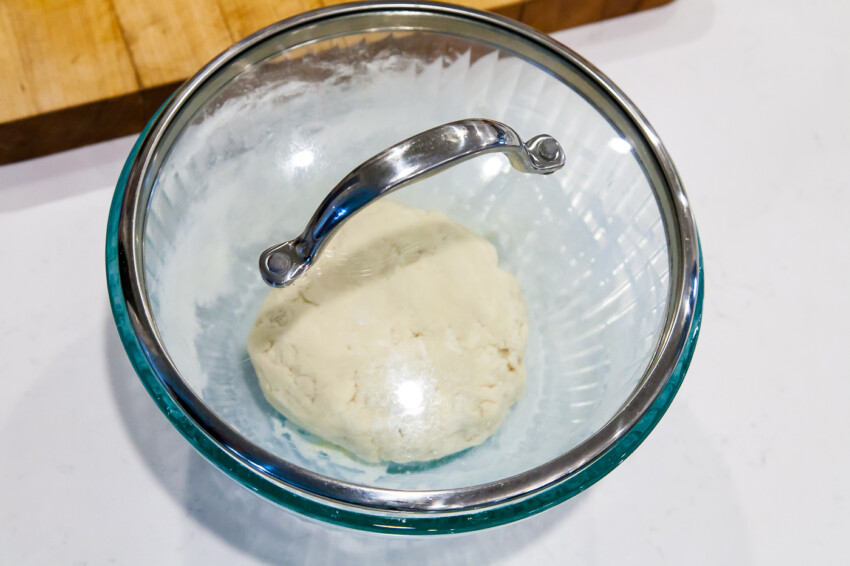
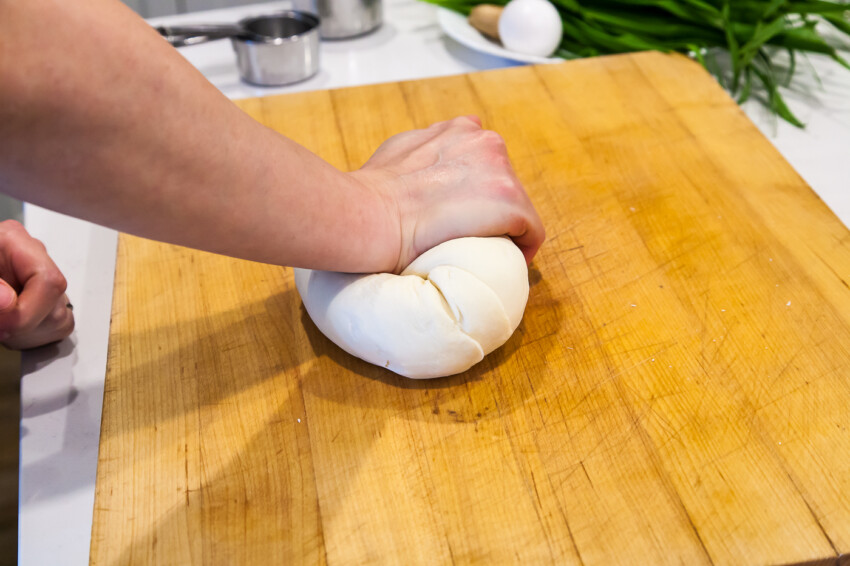
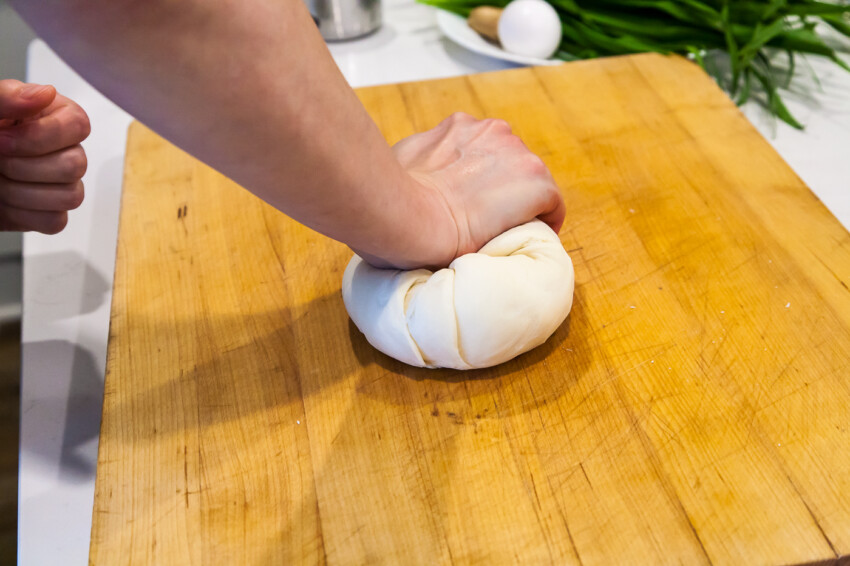
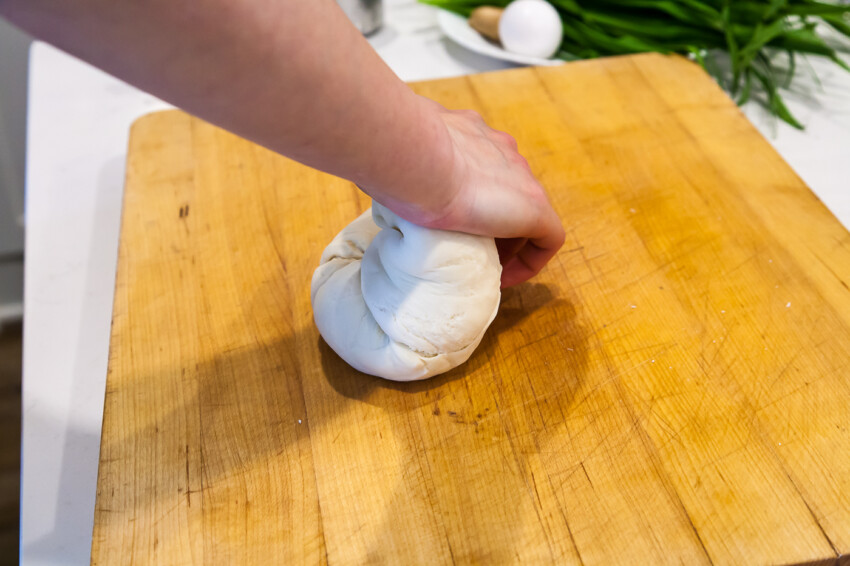
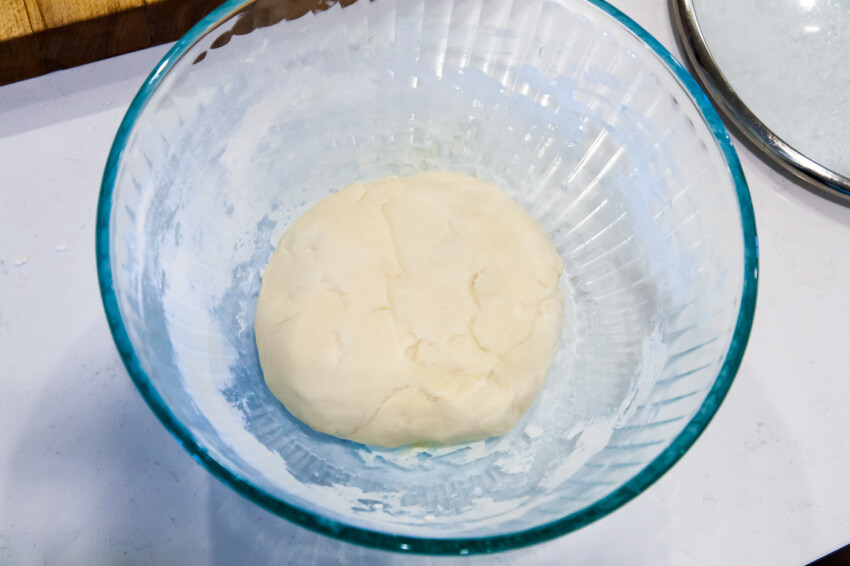
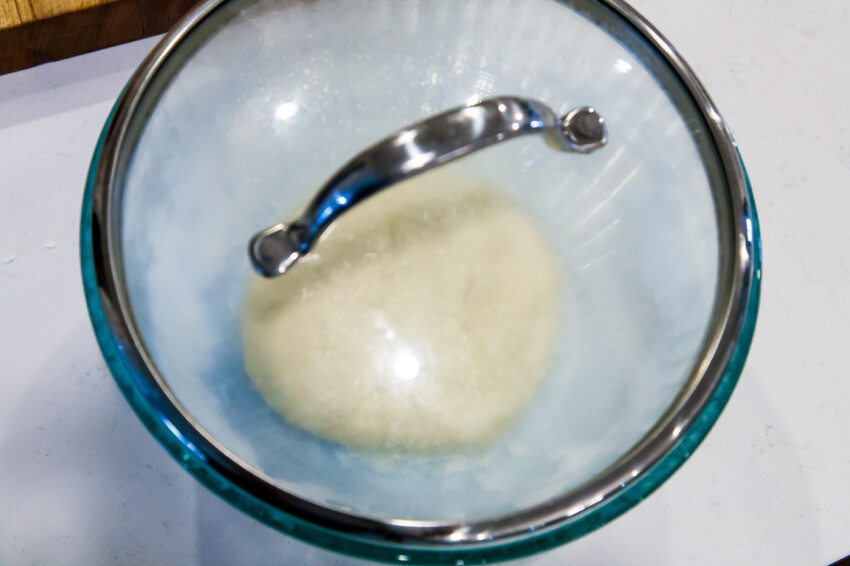
- While the dough rests, prepare the other ingredients. Cut 1/2 lb of pork meat into small cubes.1 Add the minced ginger, 1/2 teaspoon of kosher salt, 1 teaspoon of light soy sauce, 1 teaspoon of Chinese cooking wine, mixing either clockwise or counterclockwise until everything is well mixed. Rinse and cut the Chinese chives into small pieces. Mix the Chinese chives with the meat. Break a large egg in and mix well. Add 1 tablespoon of sesame oil and mix again. This completes the filling for the jiu cai he zi.
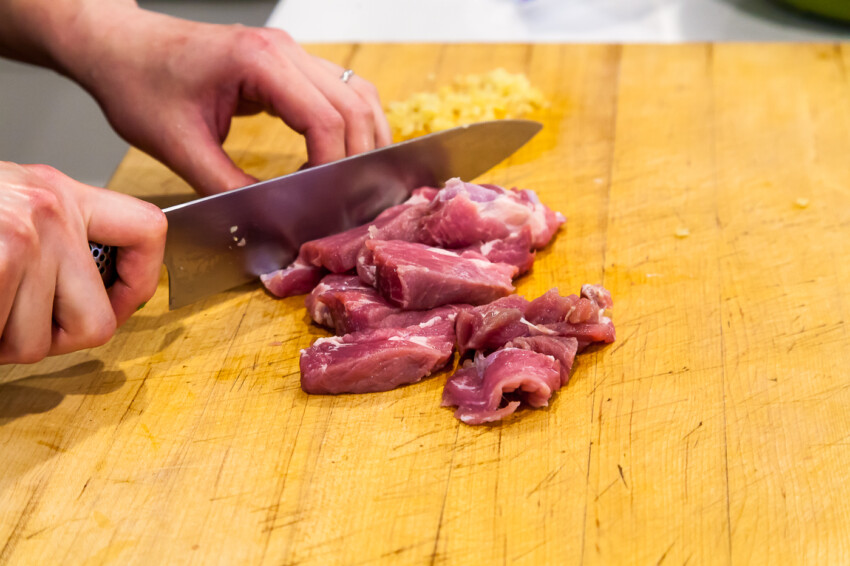
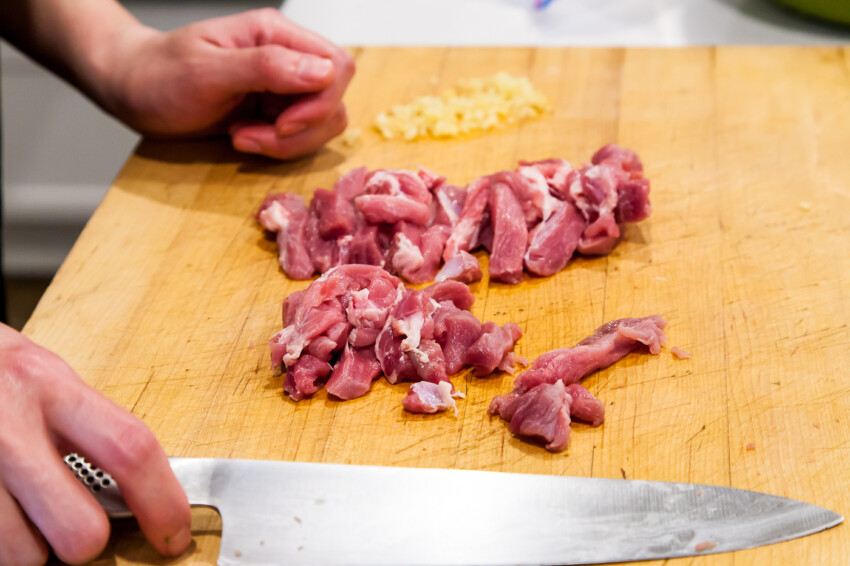
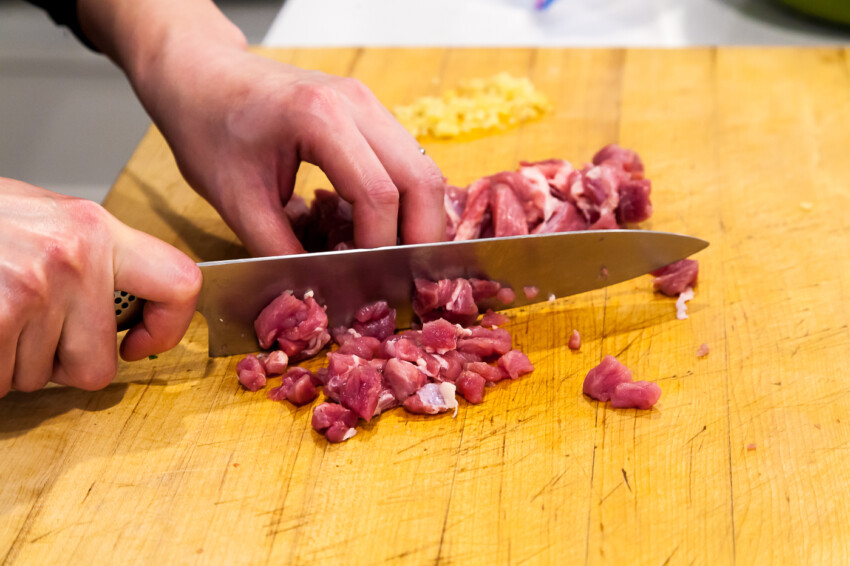
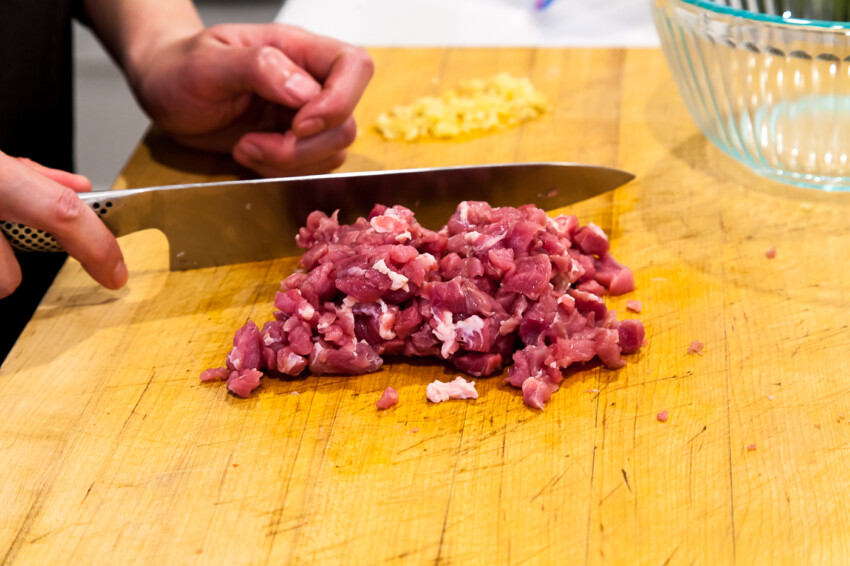
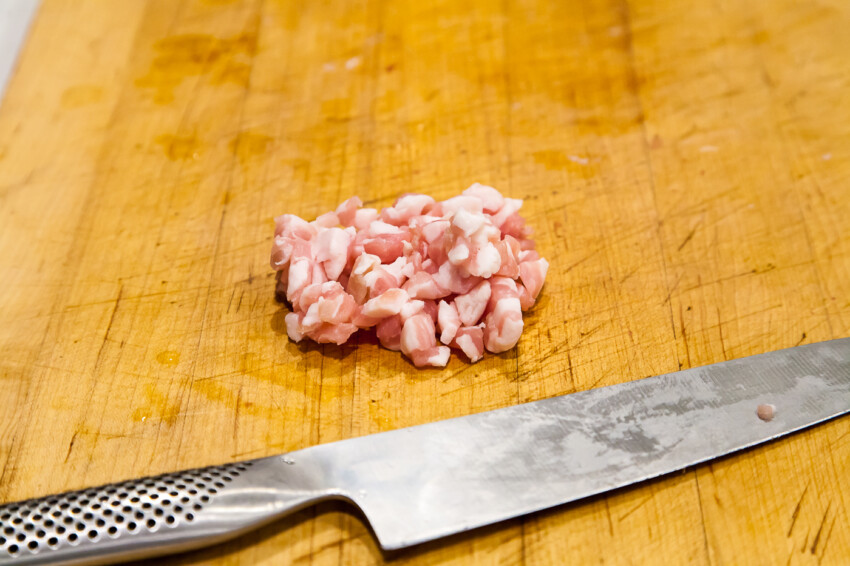
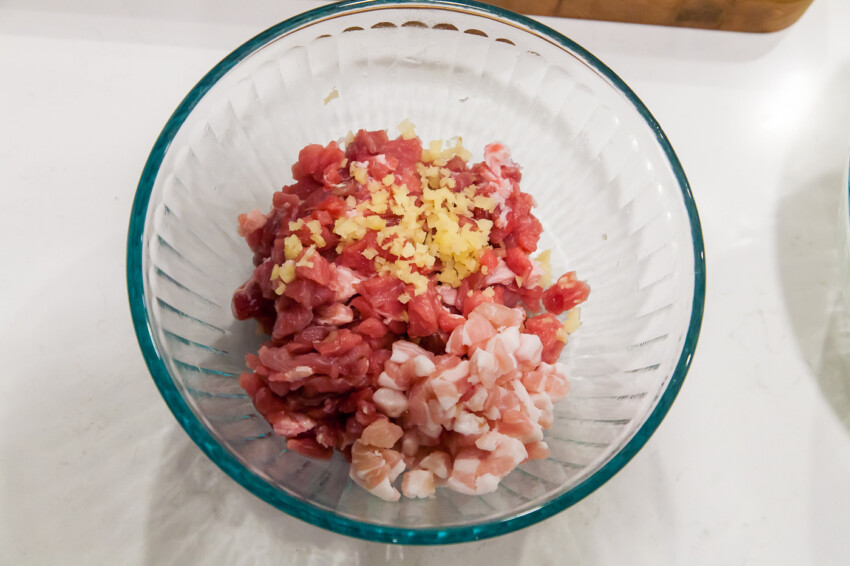
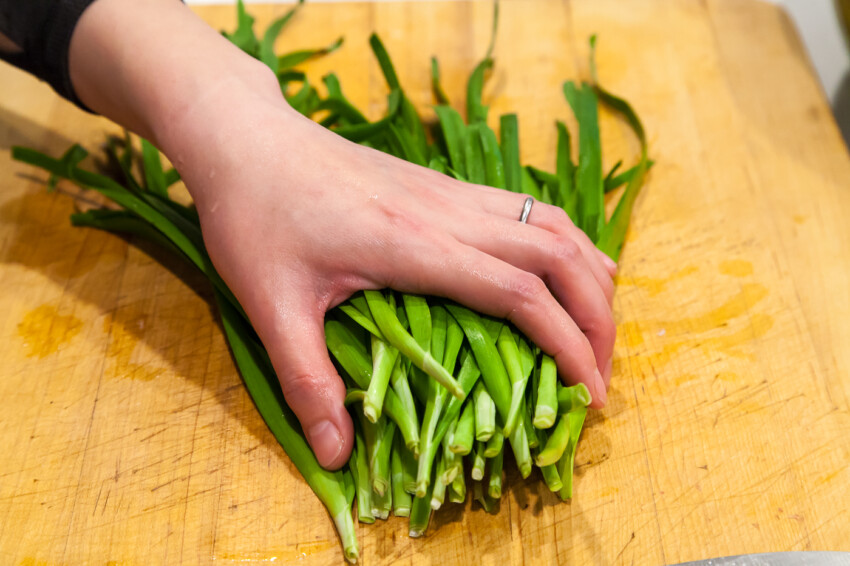
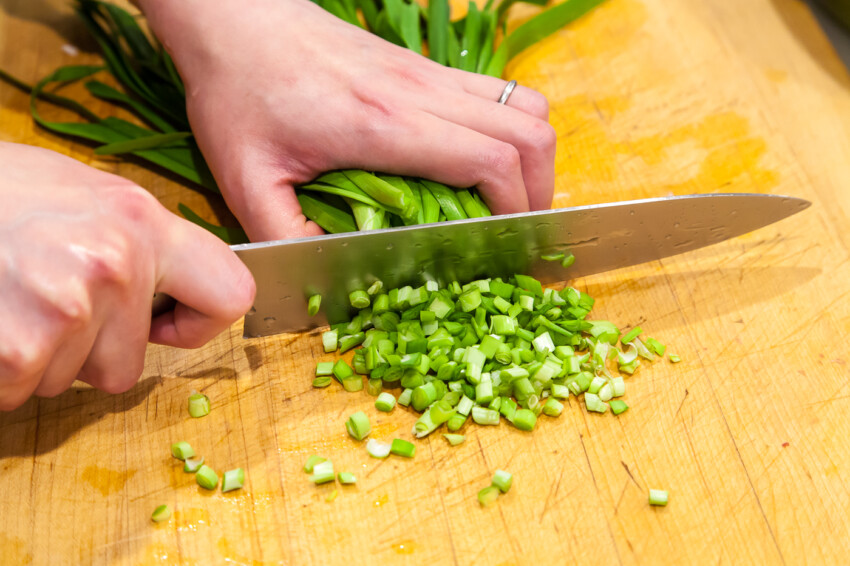
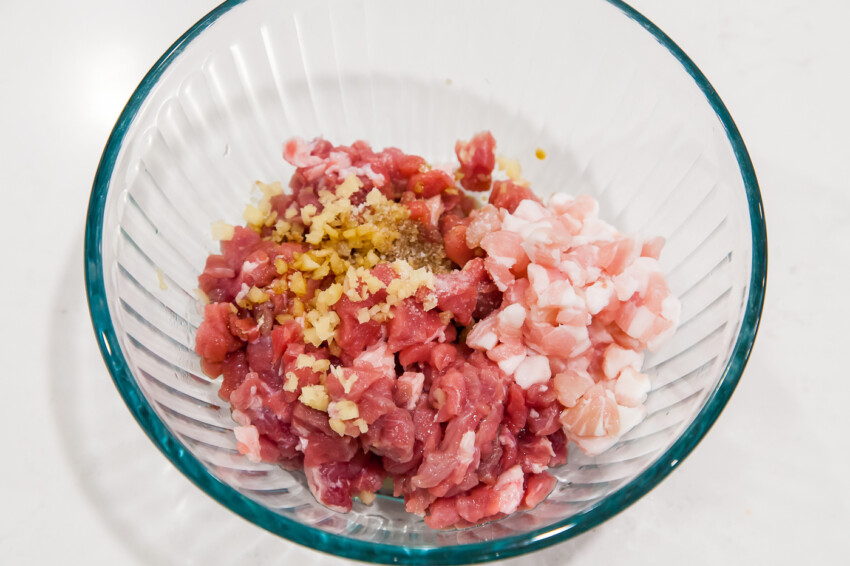
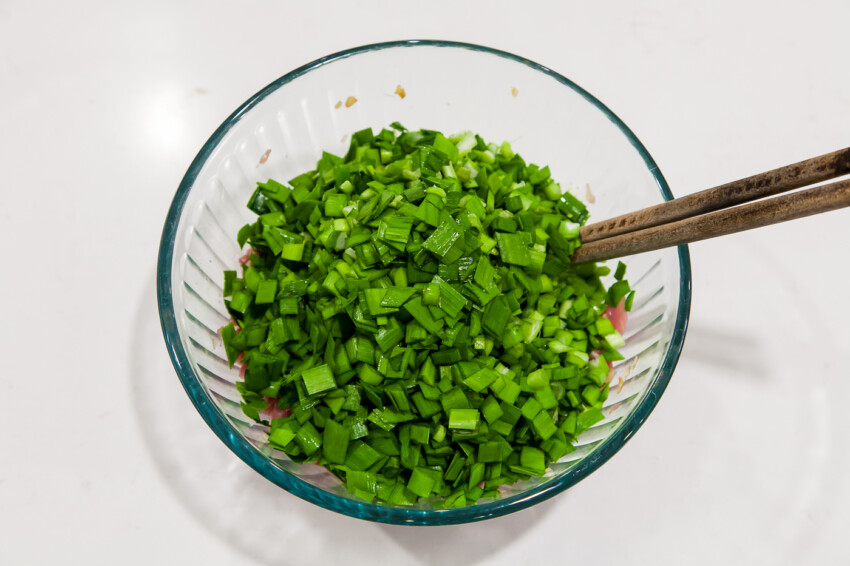
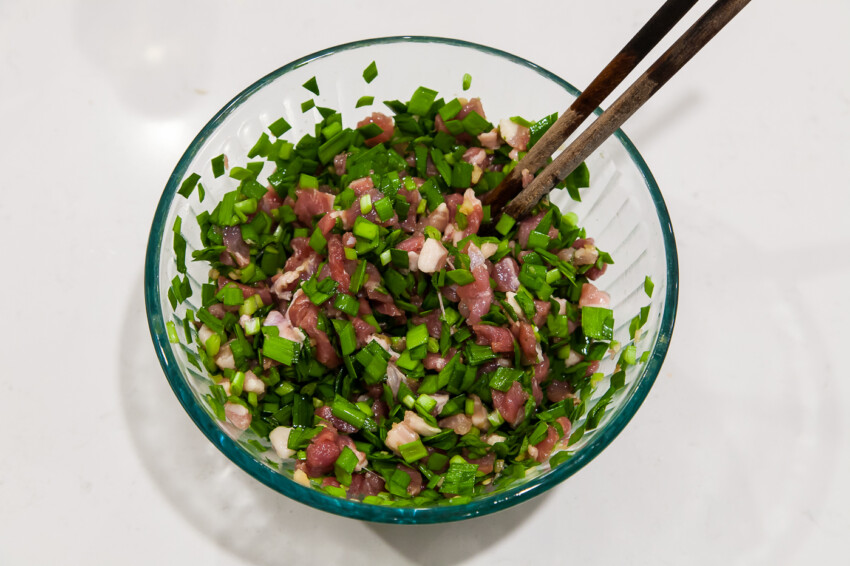
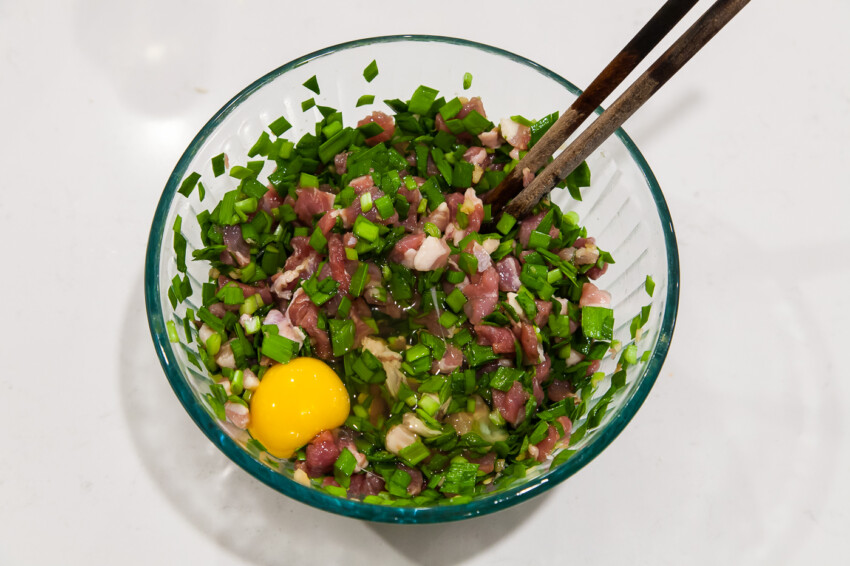
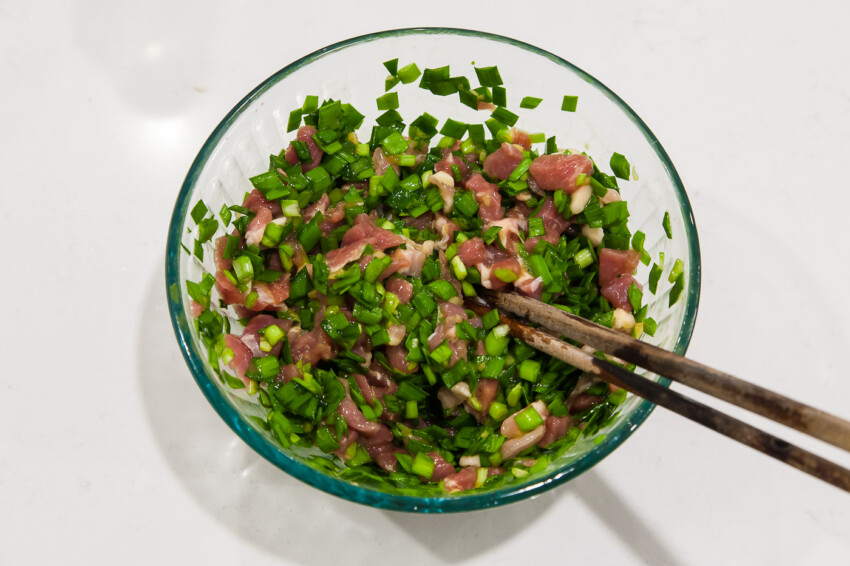
- Take the dough out of the bowl after resting. The dough should be relatively soft by now. To test for softness, press a finger into the dough. If the dough rises back quickly, it needs more rest time. On a flat surface, generously sprinkle some loose flour. Roll the dough with both hands into a log. Cut the log into 12 equal sized medallions.
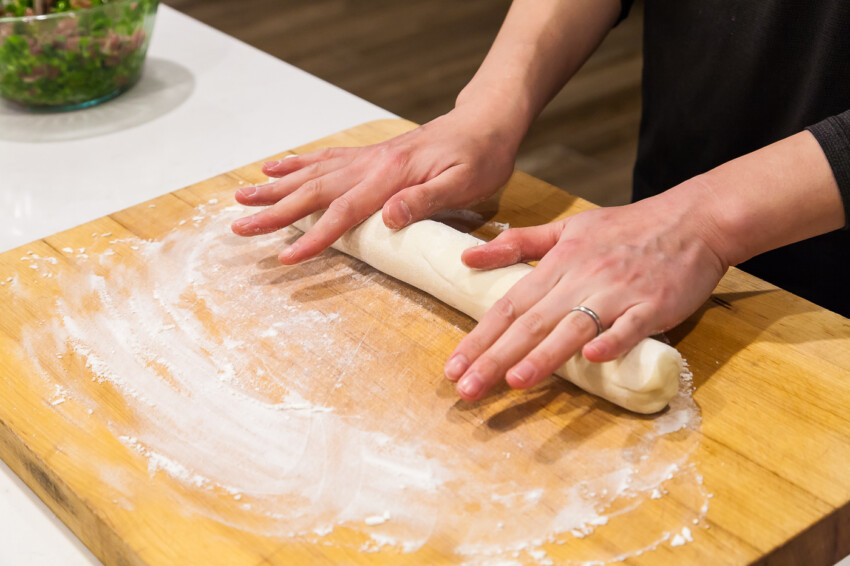
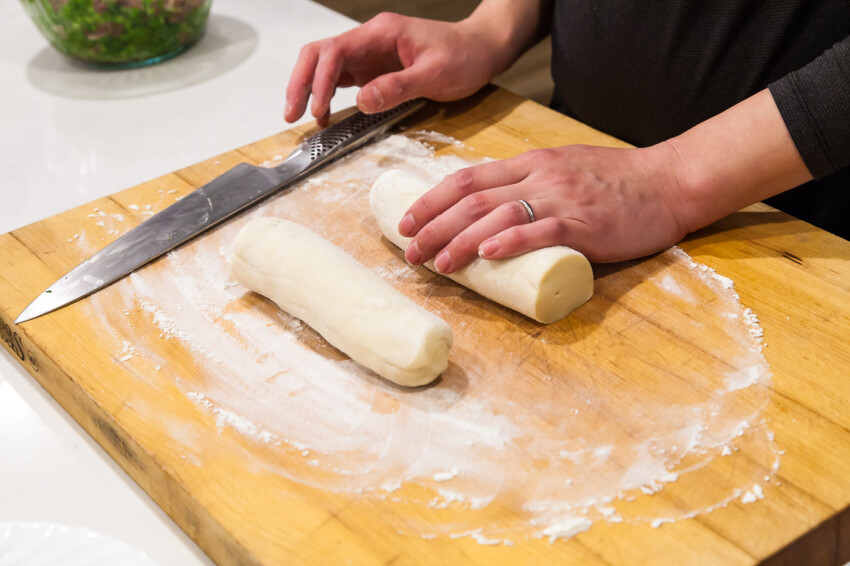
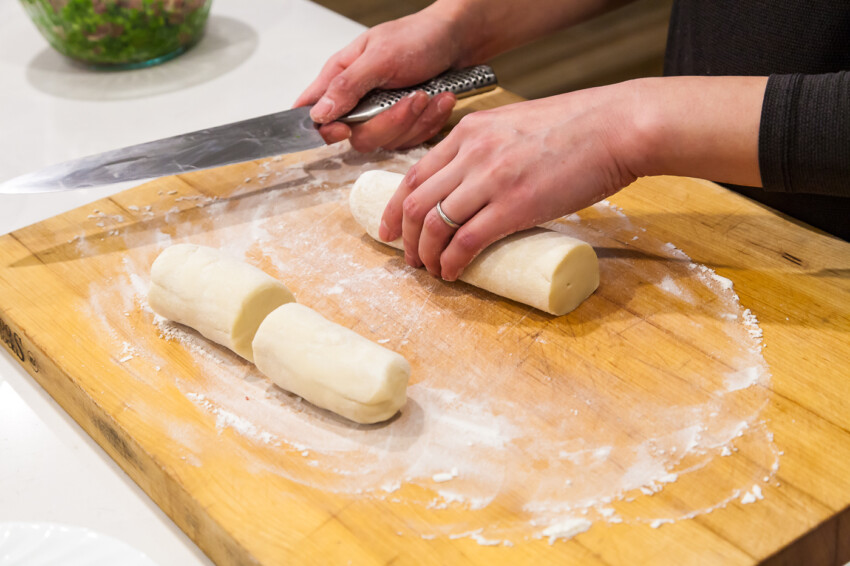
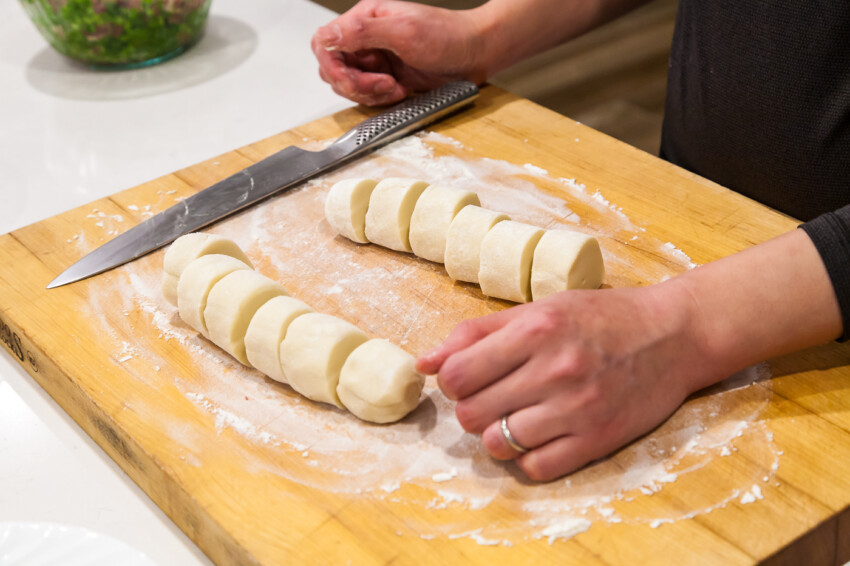
- Press the round surface of the medallions with your palm. Use a roller pin to roll each medallion into a hand sized circle. Add about 2 to 3 tablespoons of the filling (from step 2) to the circle. Use the back of a spoon to flatten the filling. Be sure to leave the outer edge of the circle free from filling. Place a second circle on top. Press the outer edges together so that the two dough skins fuse together. Make sure the seal is tight otherwise juice will leak out when you cook the jiu cai he zi.
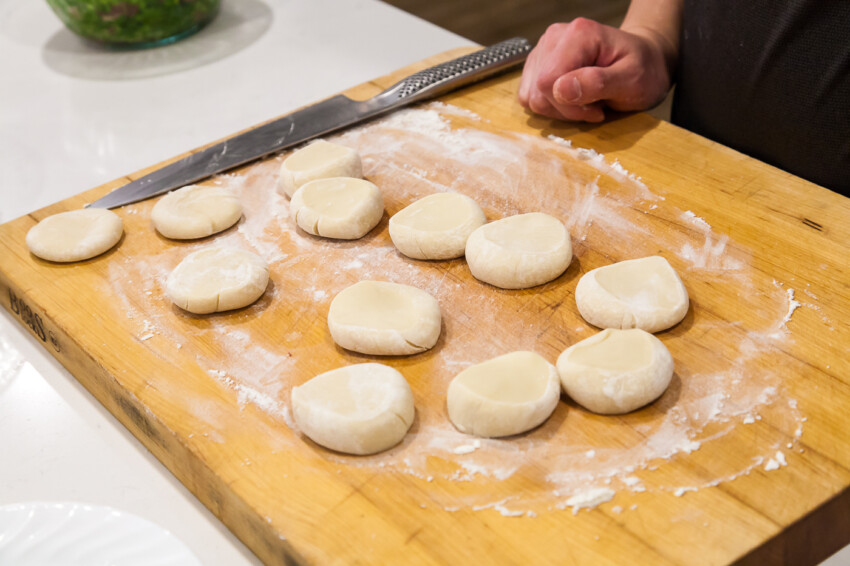
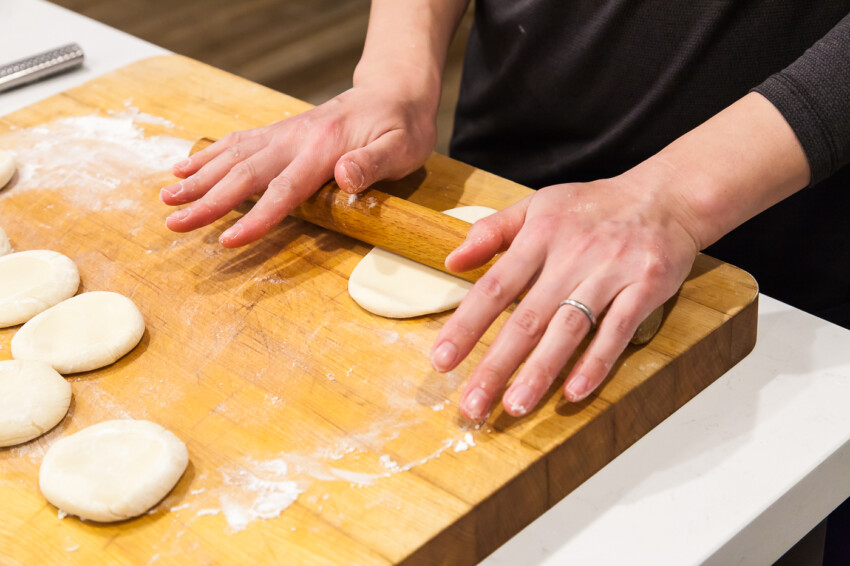
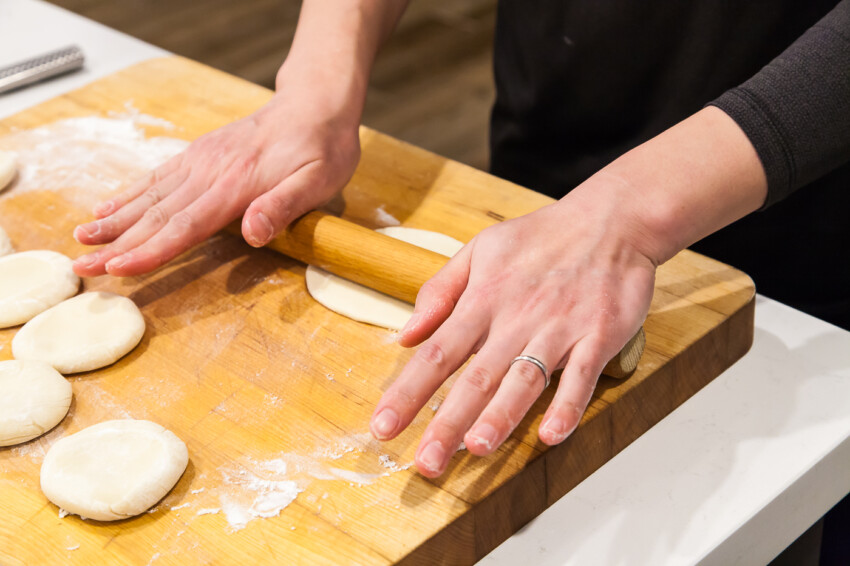
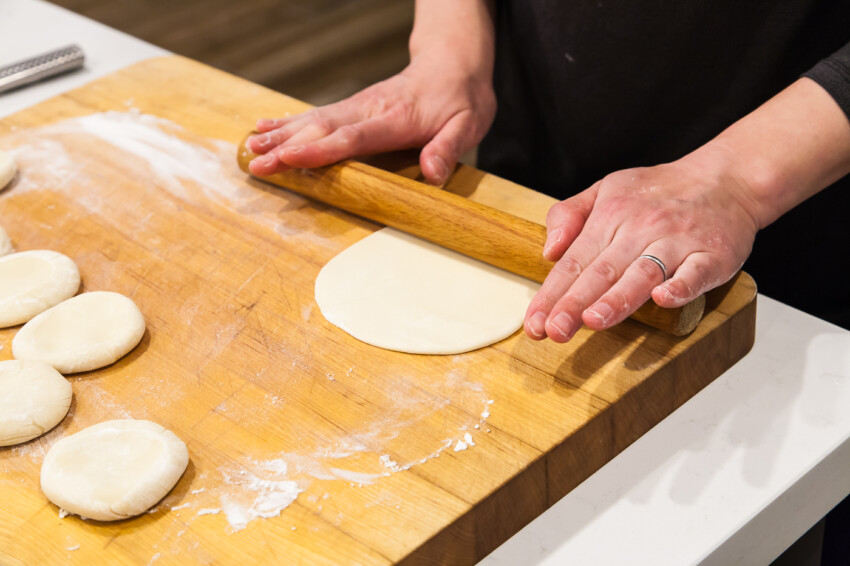
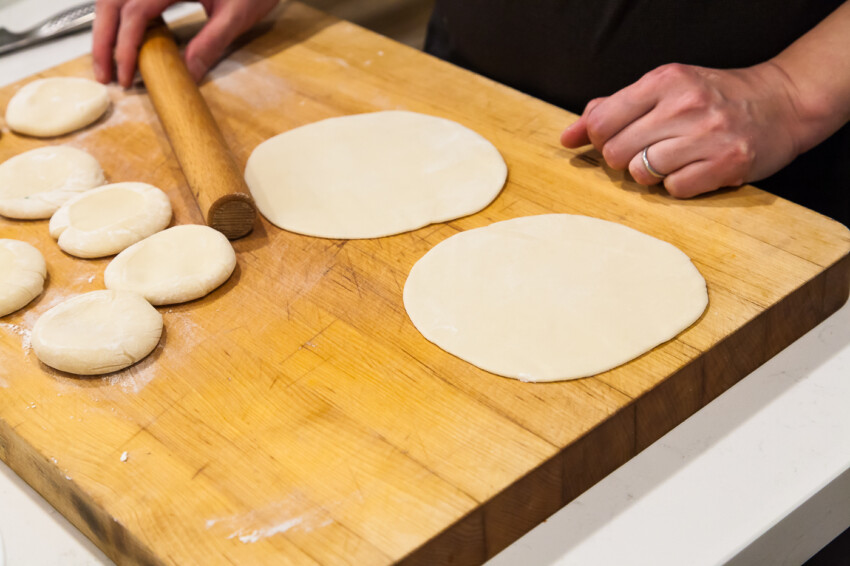
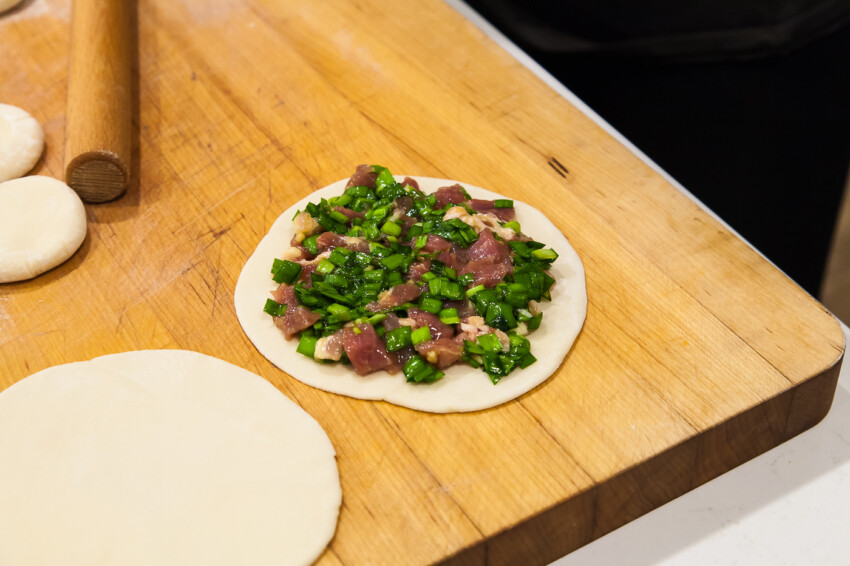
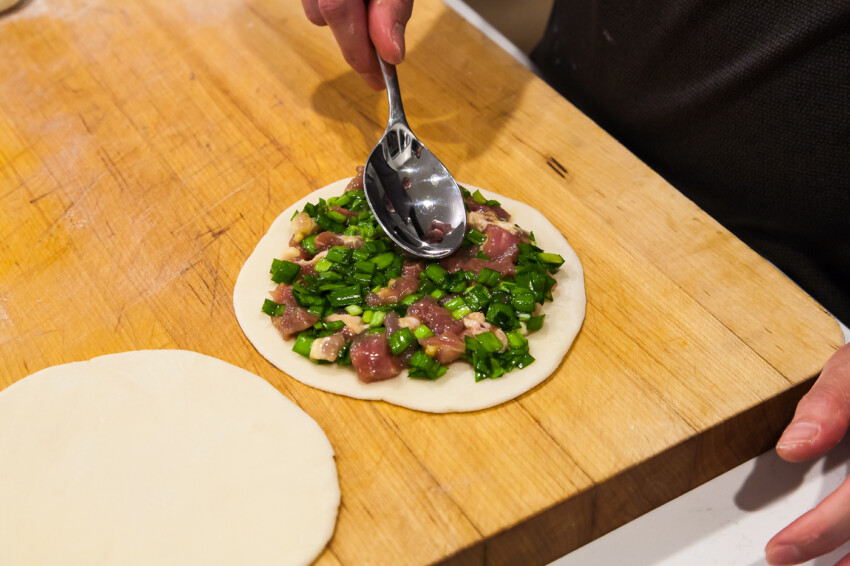
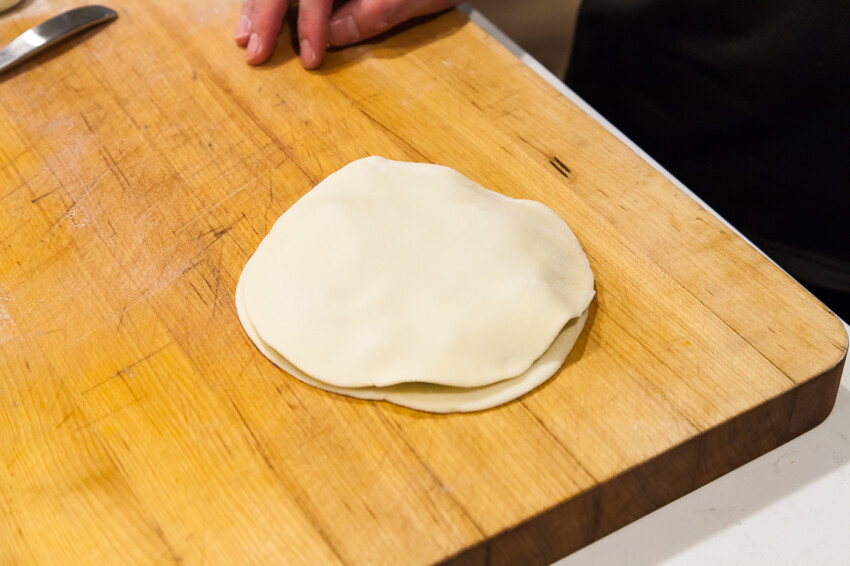
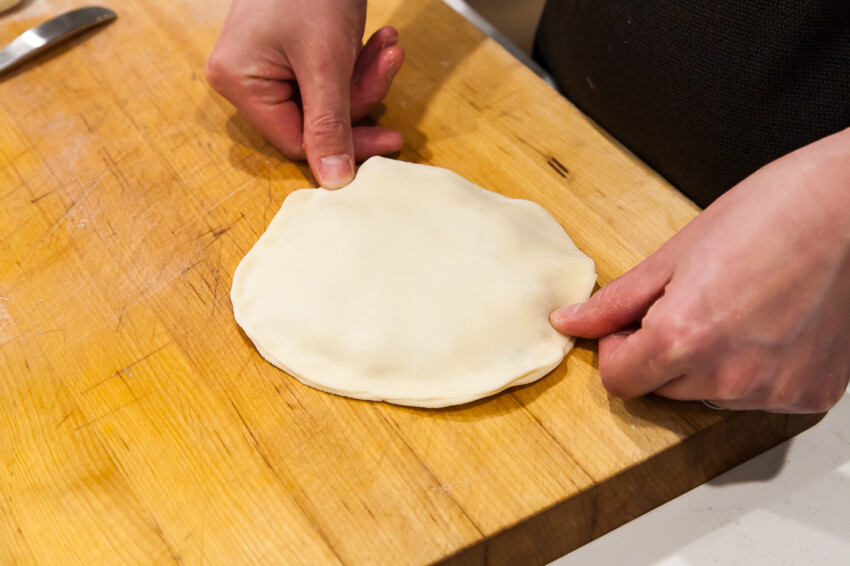
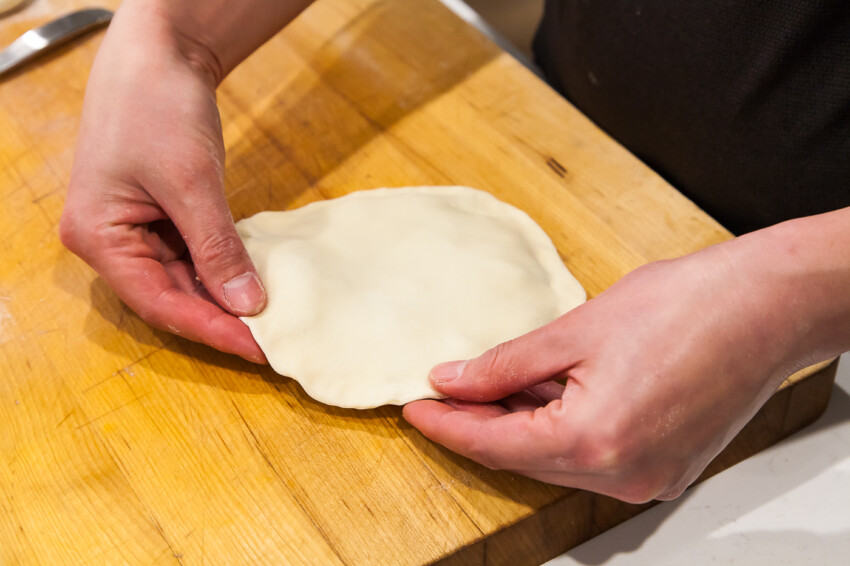
- Form the edges of the jiu cai he zi by stretching the edge slightly and folding it at an angle. See pictures. Repeat the same procedure until the entire circumference of the jiu cai he zi has been folded. Folding the edges is decorative and also helps to further seal the jiu cai he zi. Repeat the same procedure from step 4 and 5 to make the remaining Chinese chive pocket pies.
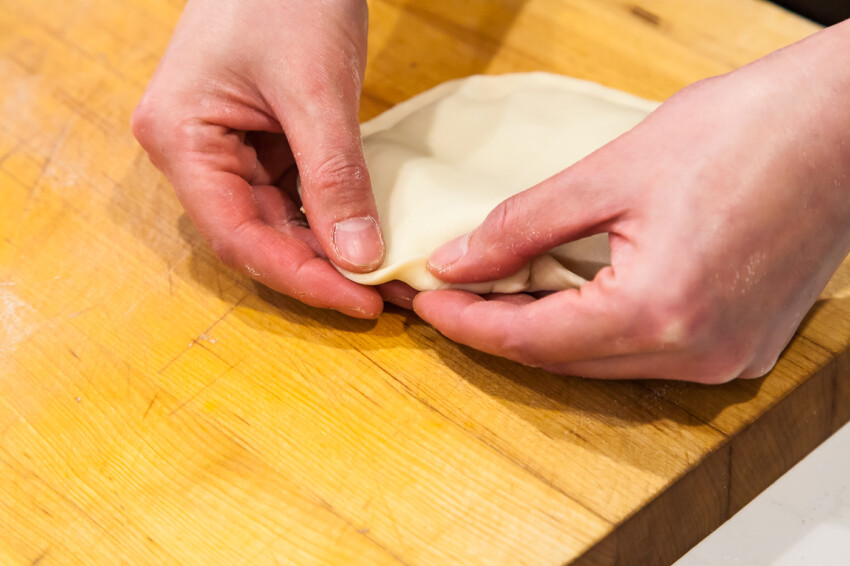
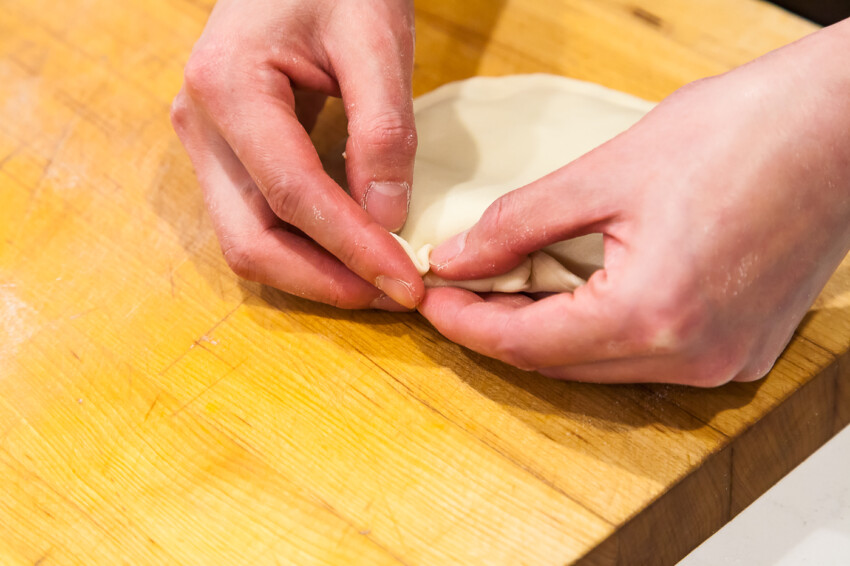
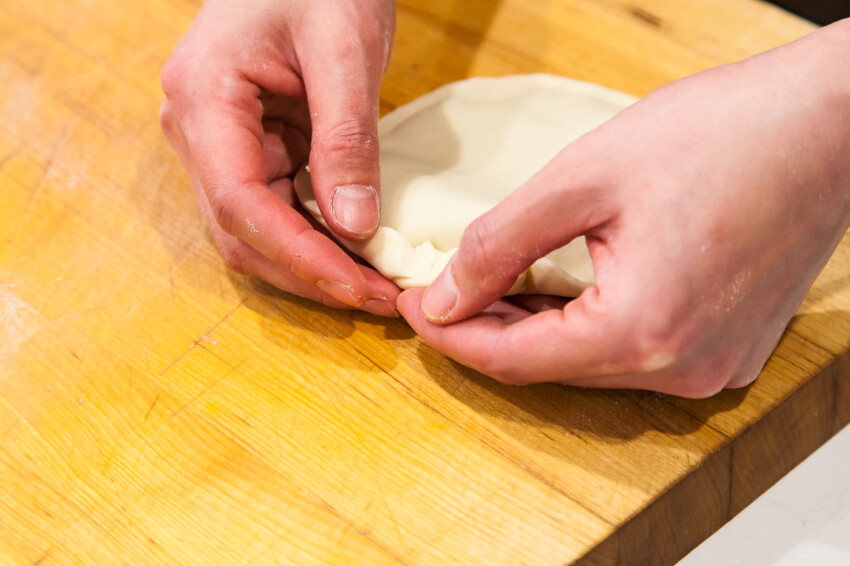
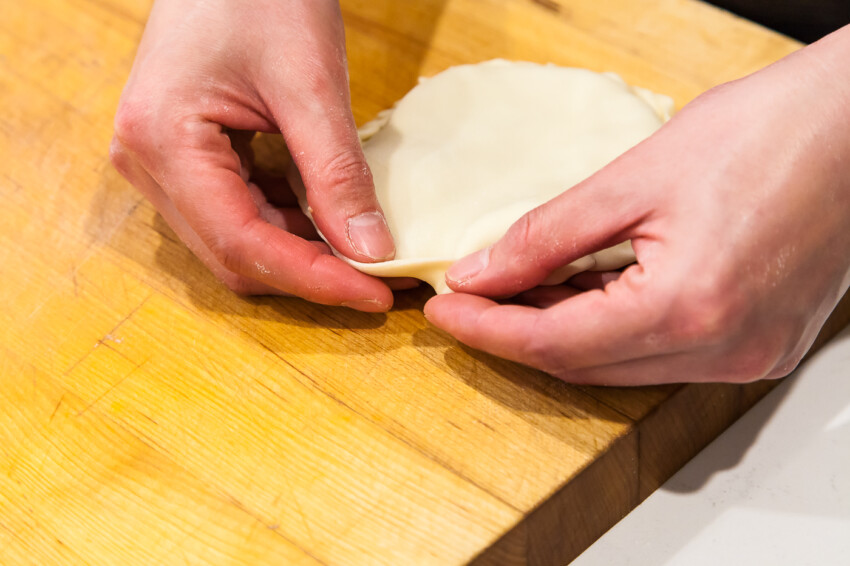
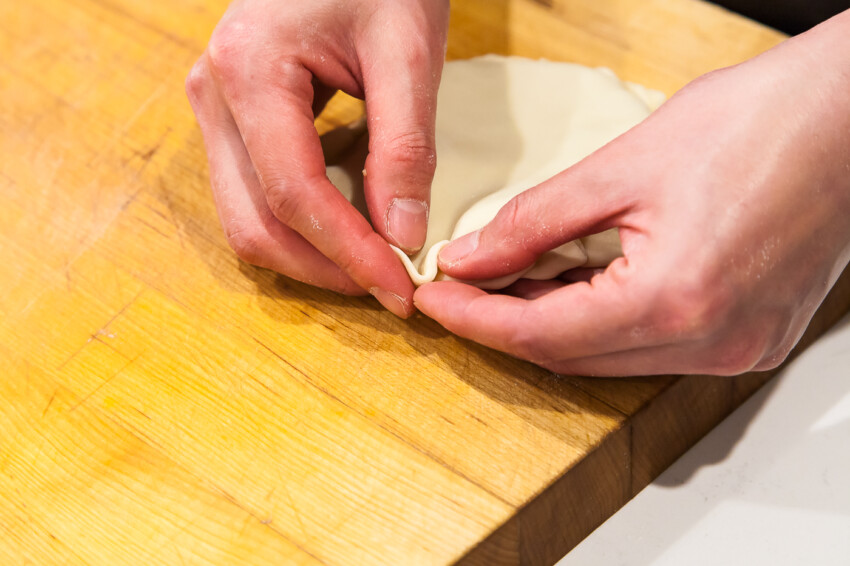
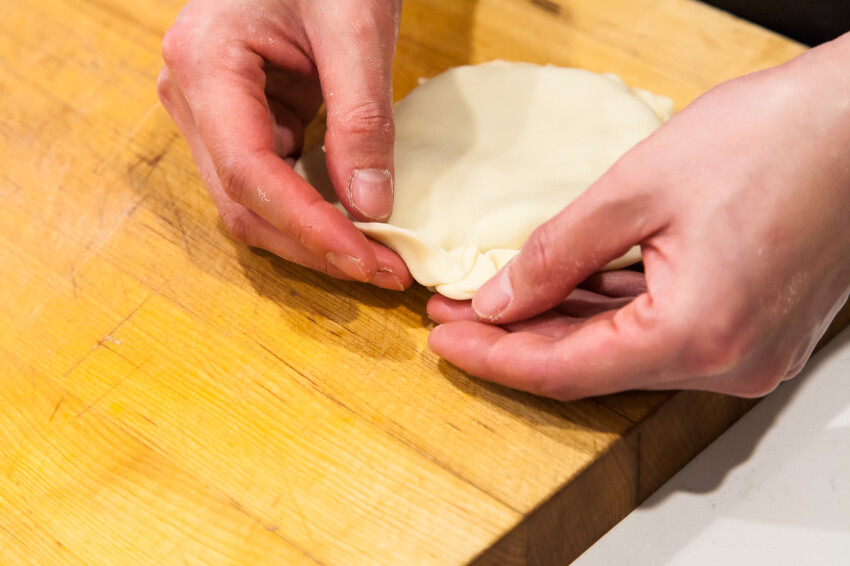
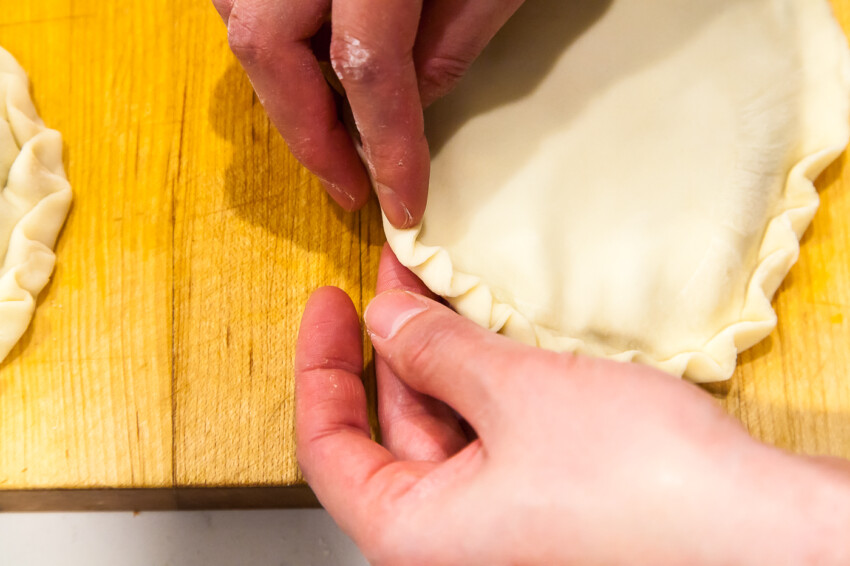
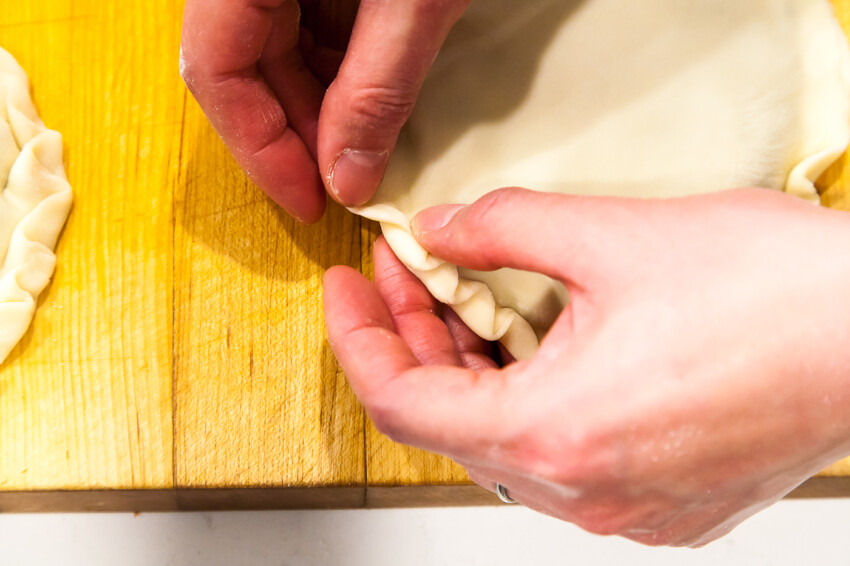
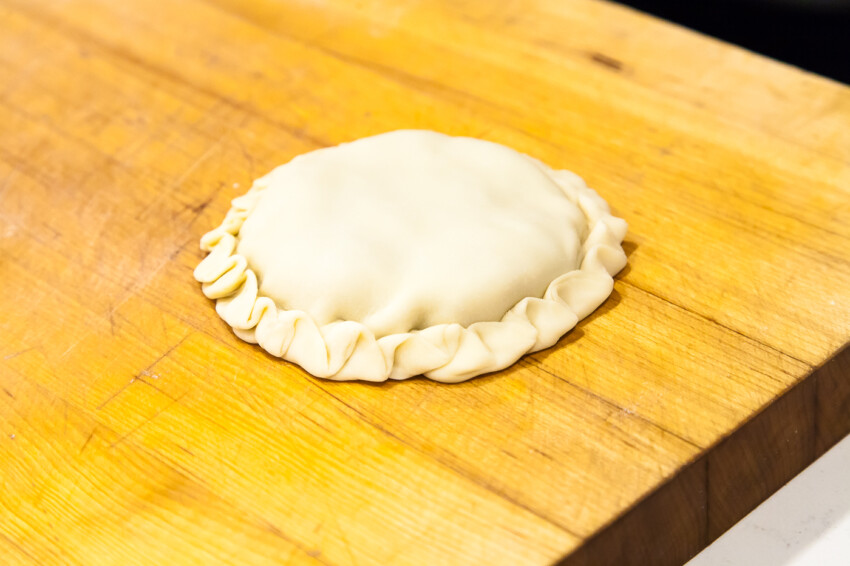
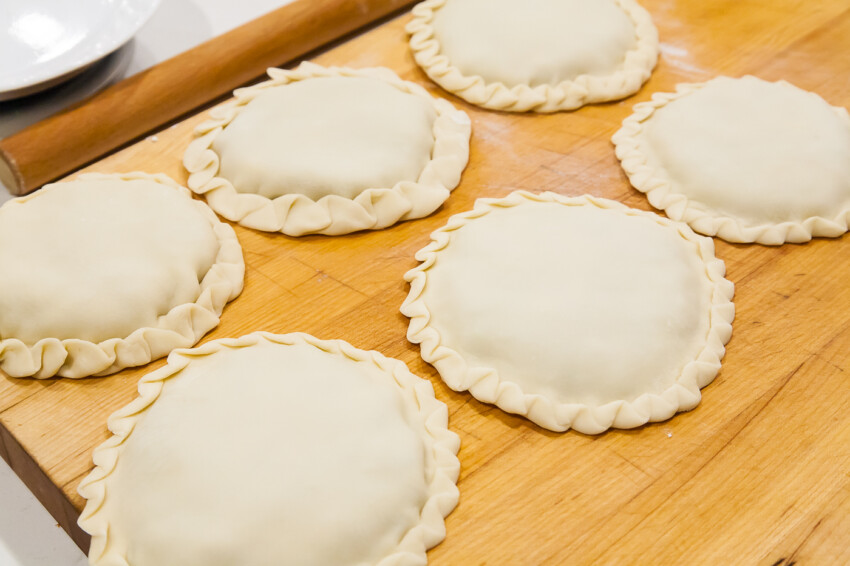
- Heat a large well-seasoned skillet or non-stick pan under medium-low heat. Add 1 tablespoon of vegetable oil and swirl around. When the oil is warm, add a few Chinese chive pocket pies to form one layer, making sure none are overlapping. With a large skillet, it usually takes two batches to cook all the pockets from this recipe. Pan fry the pocket pies for 3 – 5 minutes until golden brown. Carefully flip to the other side and lower the heat to low. Cover the lid and pan fry for another 3 – 5 minutes. Remove the lid. If both sides are golden brown and the pockets have plumped up, they are ready.
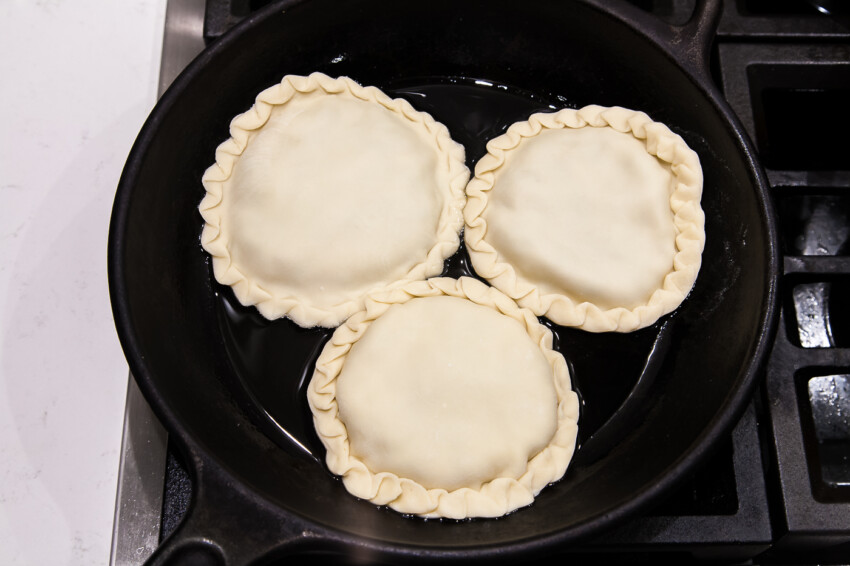
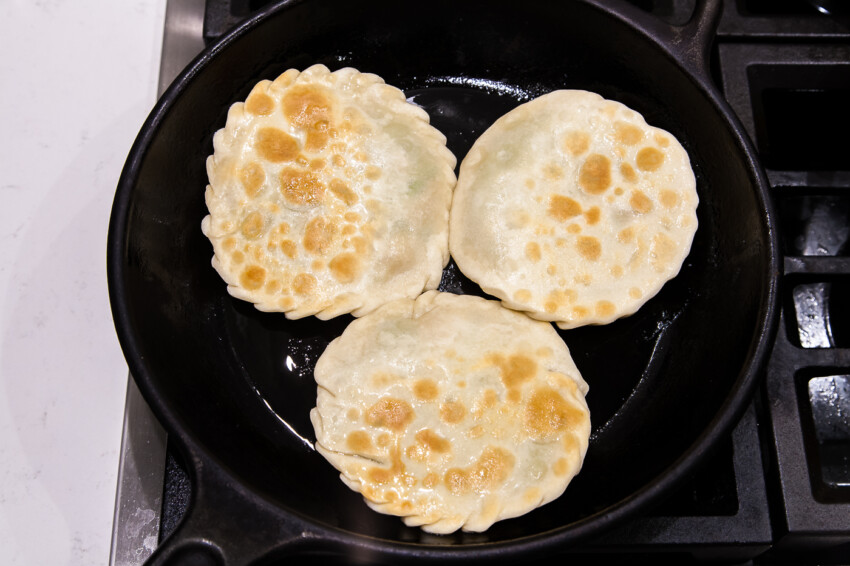
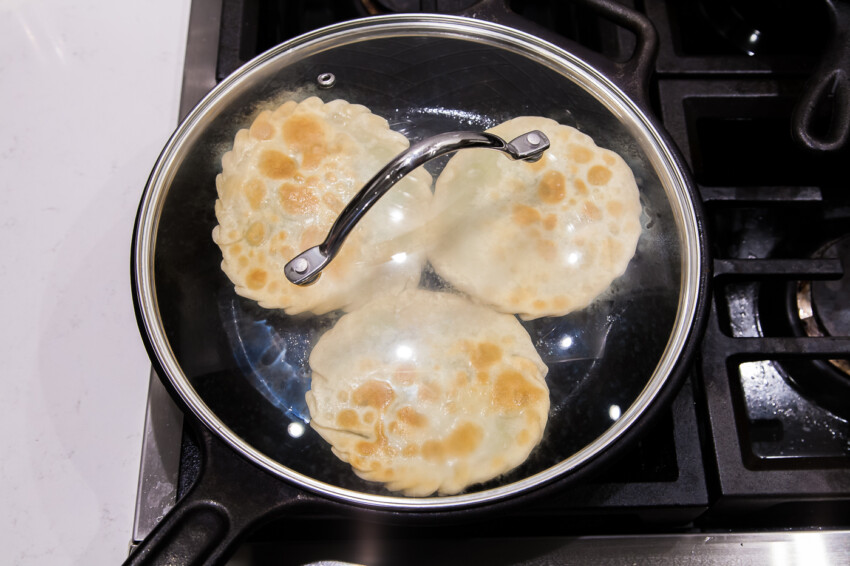
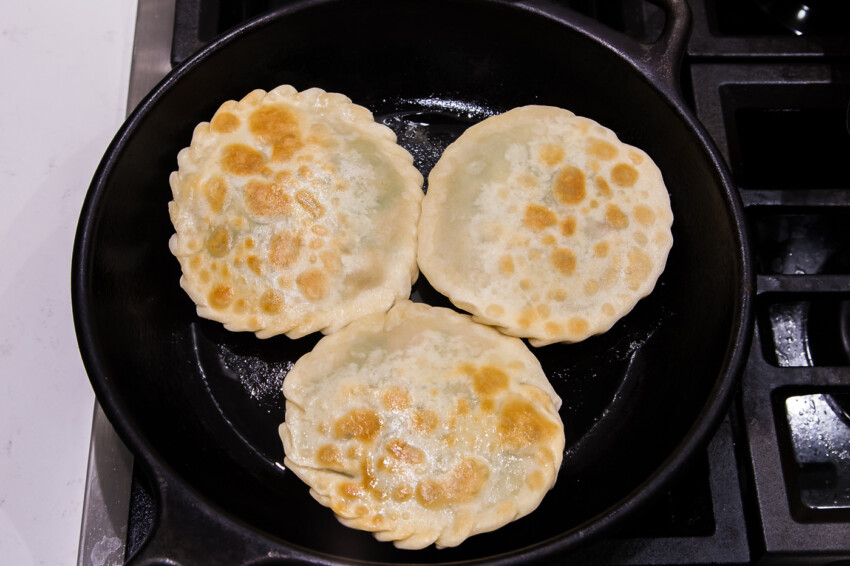
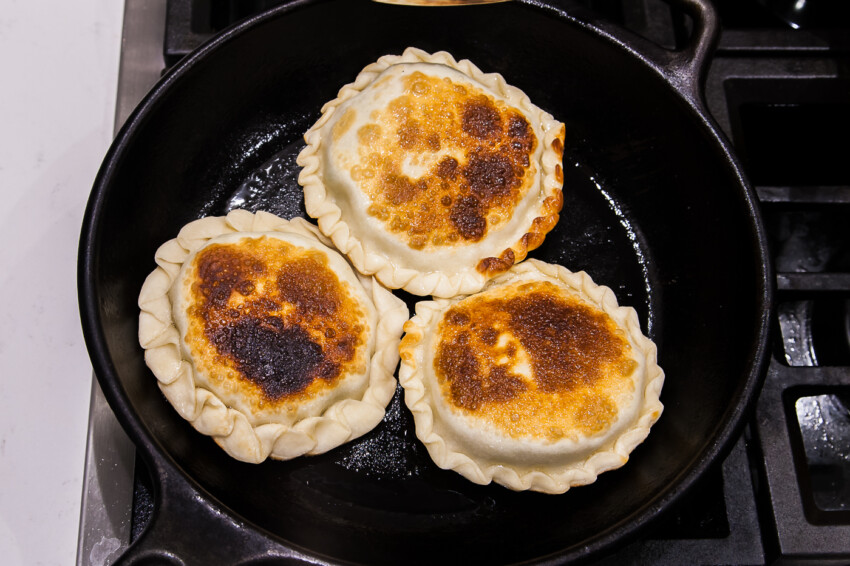
- Remove the Chinese Chive Pocket Pies from the heat and let them cool for 5 minutes before consuming. The insides of the pockets will still be quite hot. You can eat the pockets as a one piece or cut them into halves. Add a few drops of the Chinese black vinegar to add more flavor while enjoying.
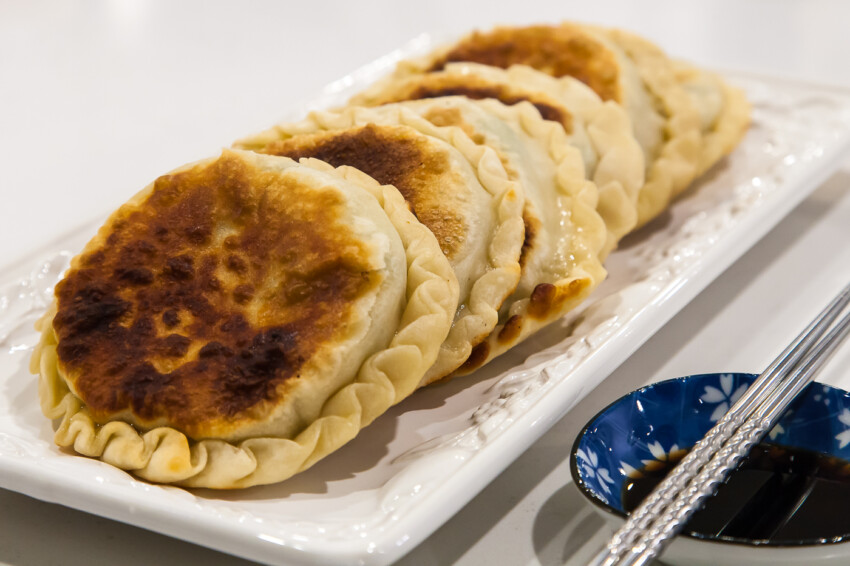
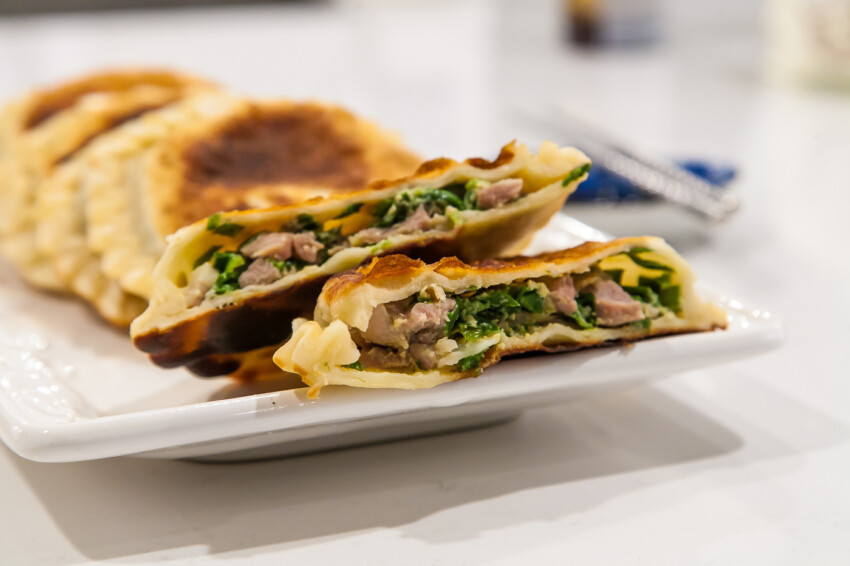
Bon Appétit

Notes:
- I like to use pork shoulder or pork butt because these pork cuts usually have some fat, which is important for the overall flavor and texture. If your pork is especially lean, add some pork belly cubes or fat cubes, as I did here.
- Different brands of all purpose flour absorb water differently. I especially like Daehan Korean all purpose flour.
- I recommend pouring a little bit of water at a time when mixing. I usually end up with some extra water leftover.
As an Amazon Associate I earn from qualifying purchases.


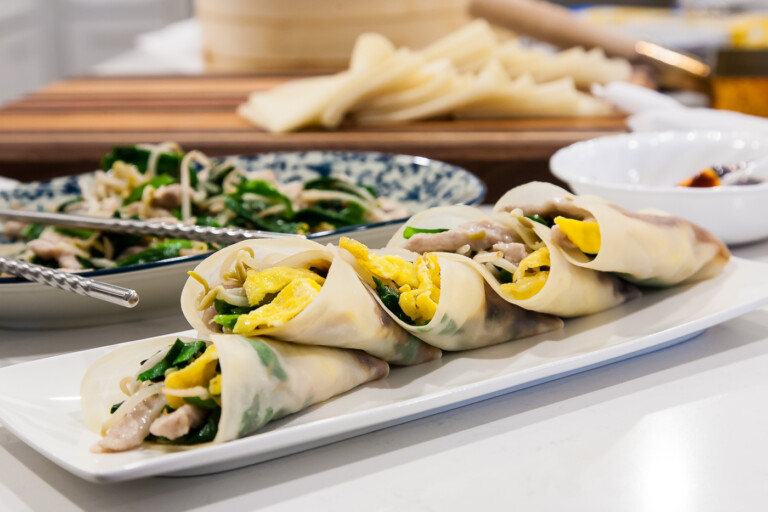
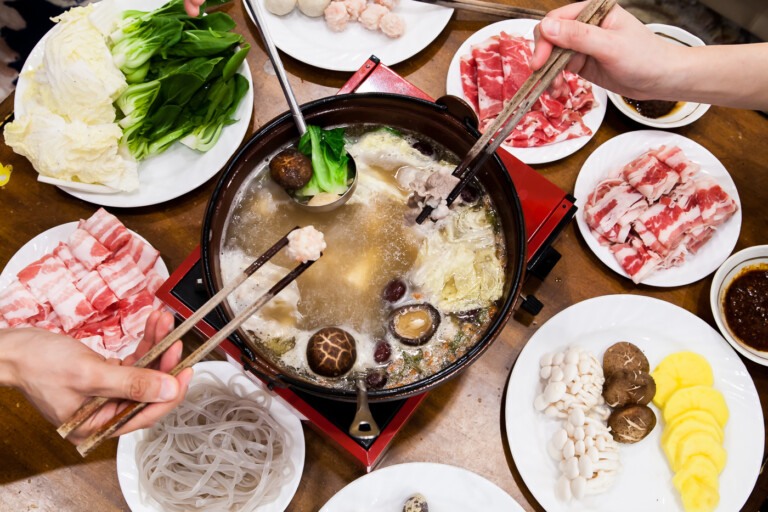
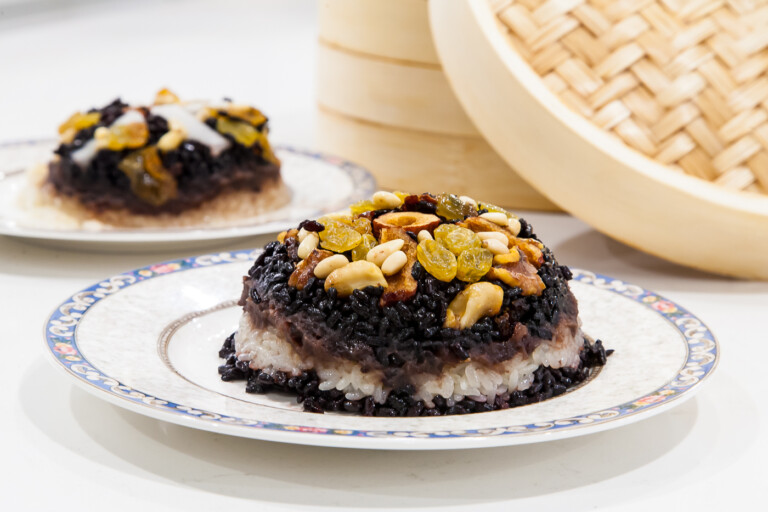
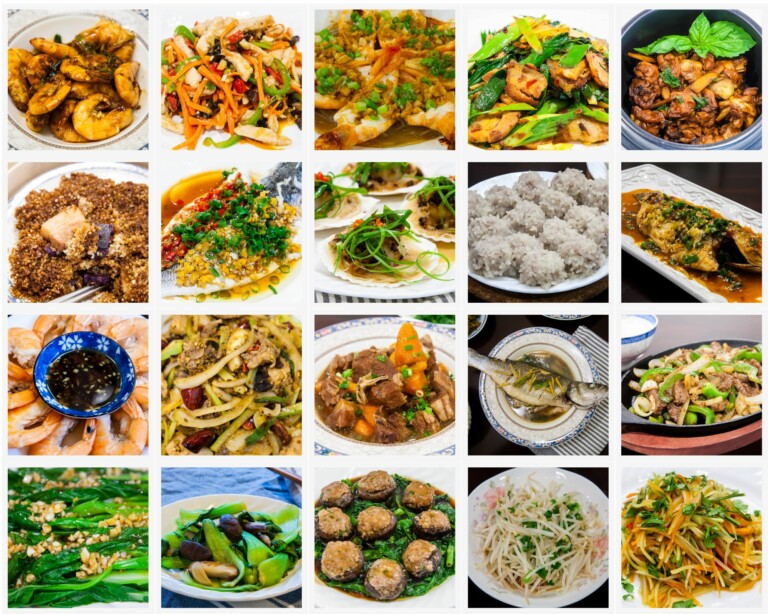
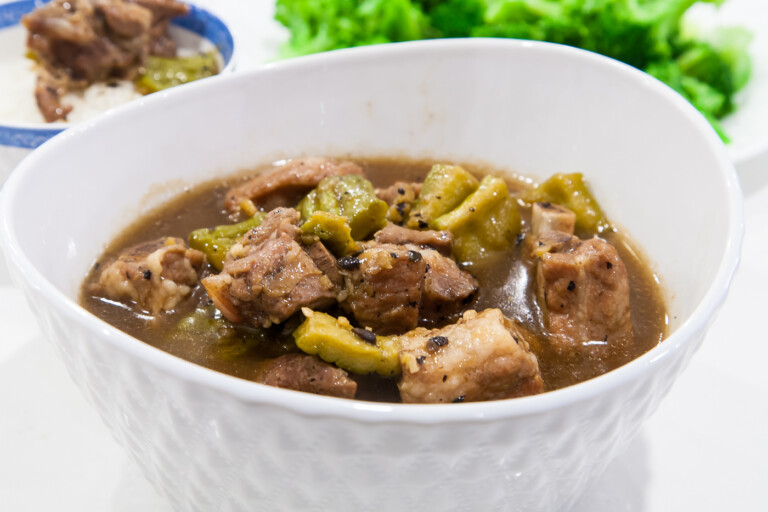
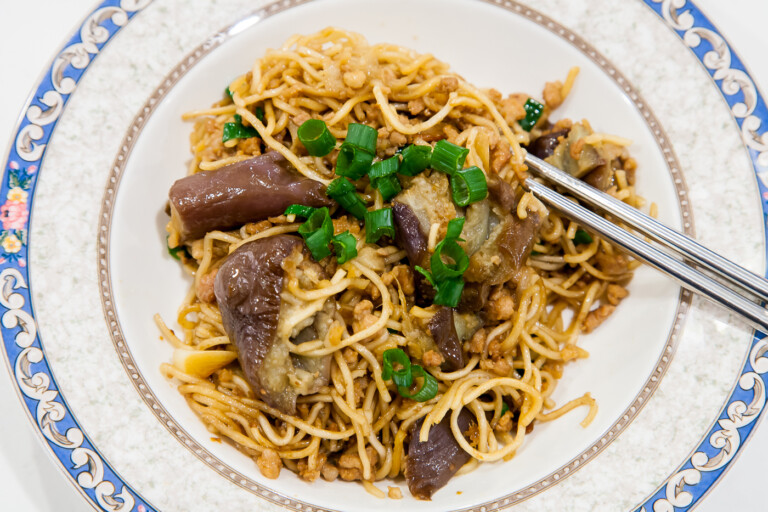
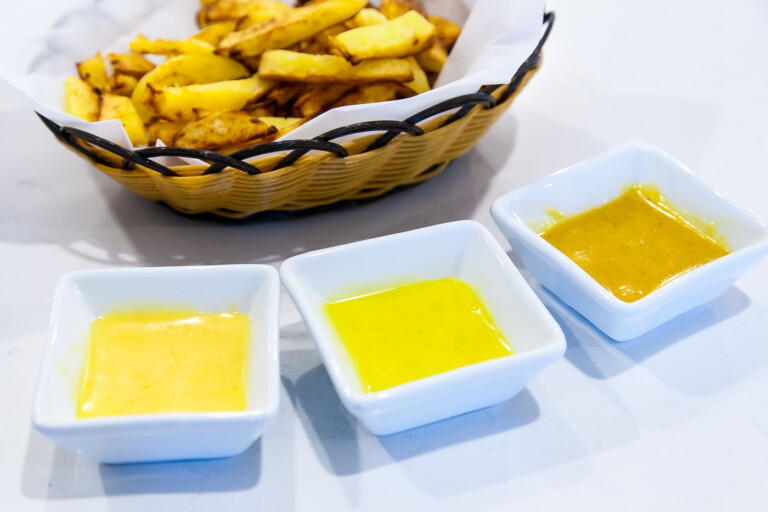
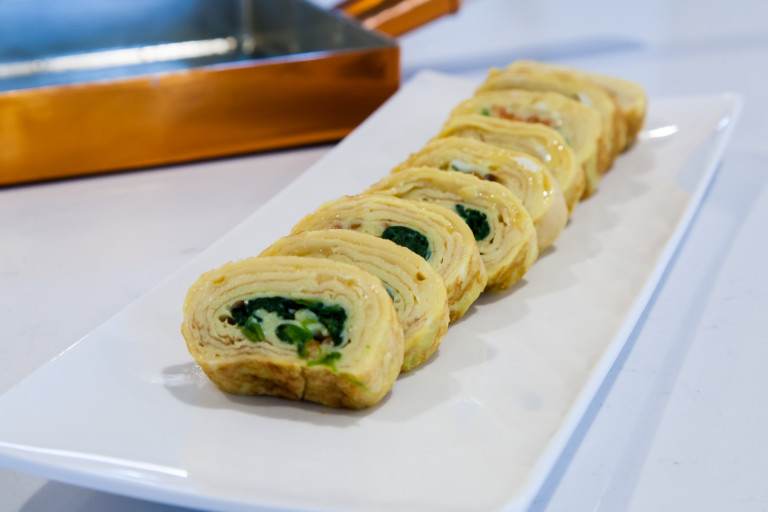
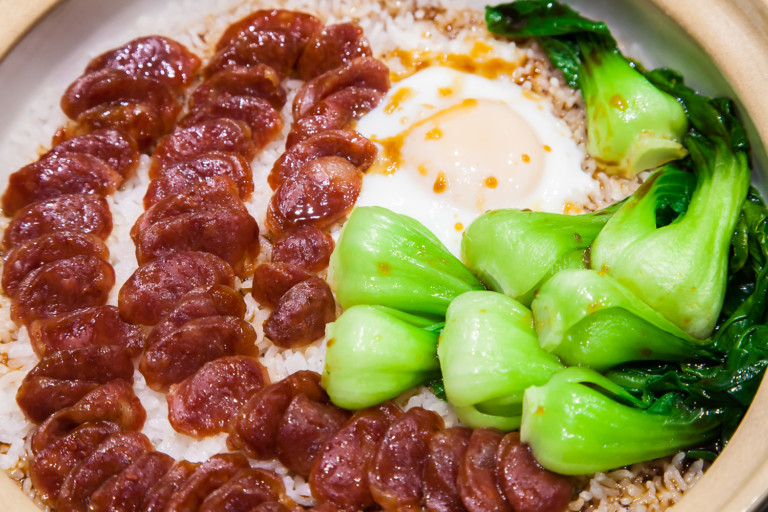
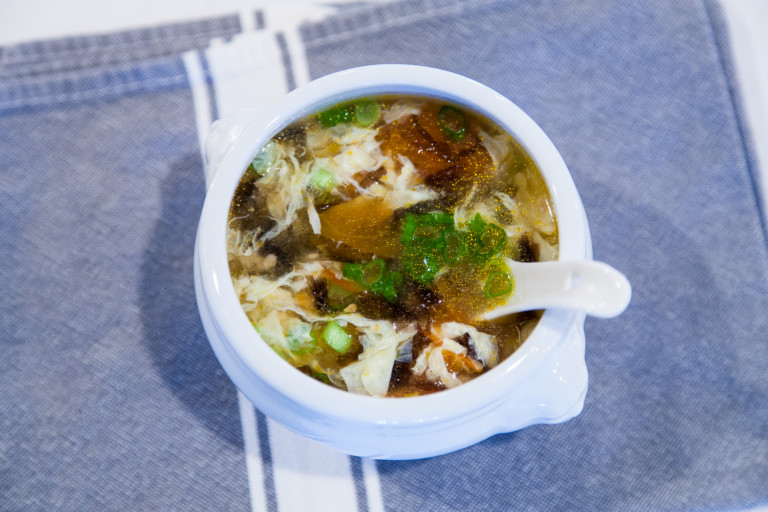
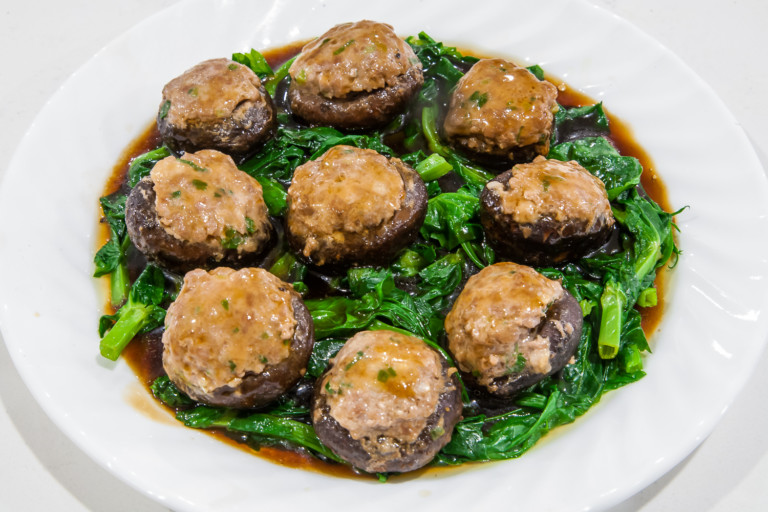
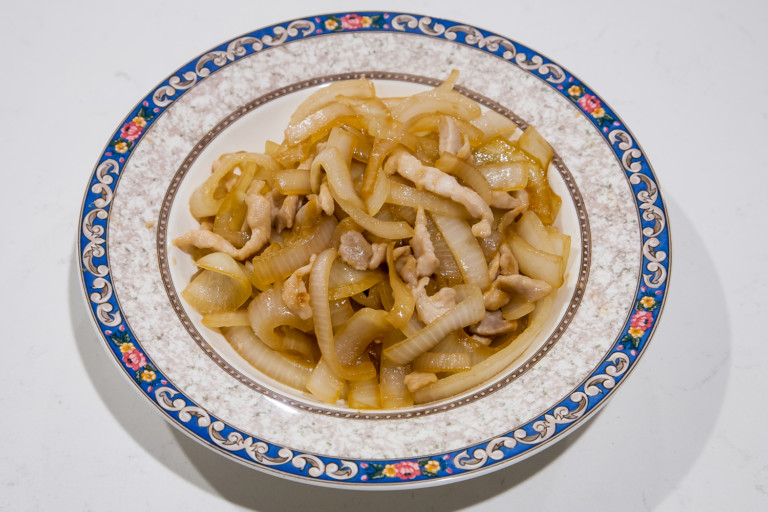
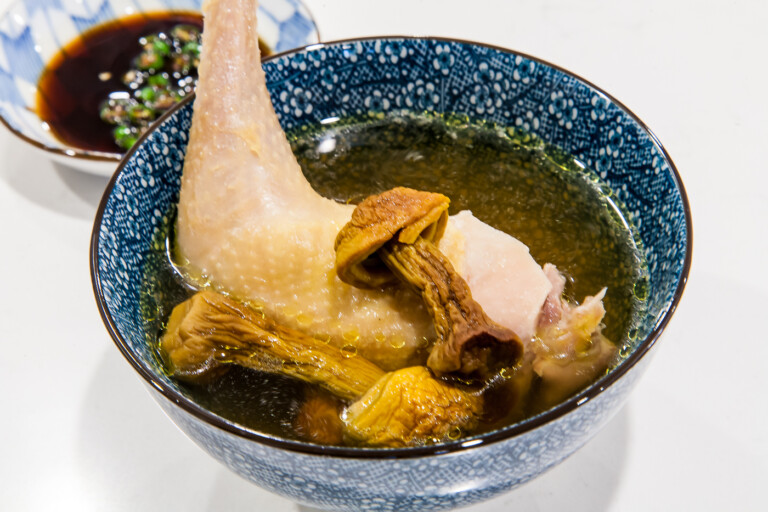
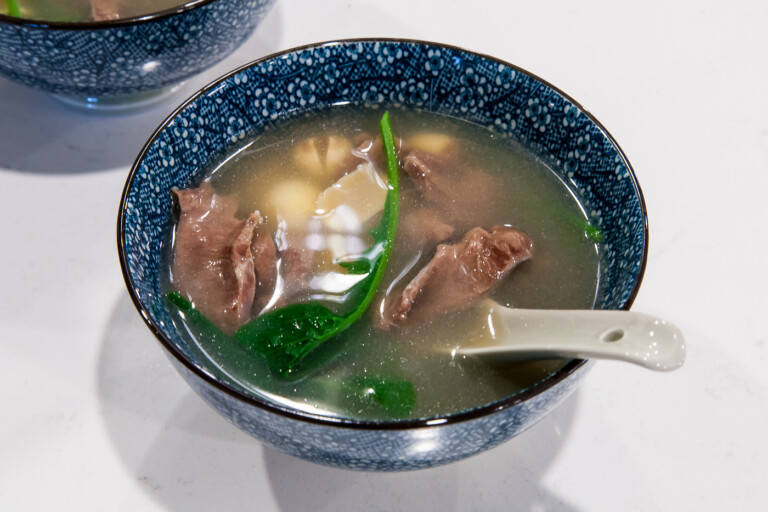
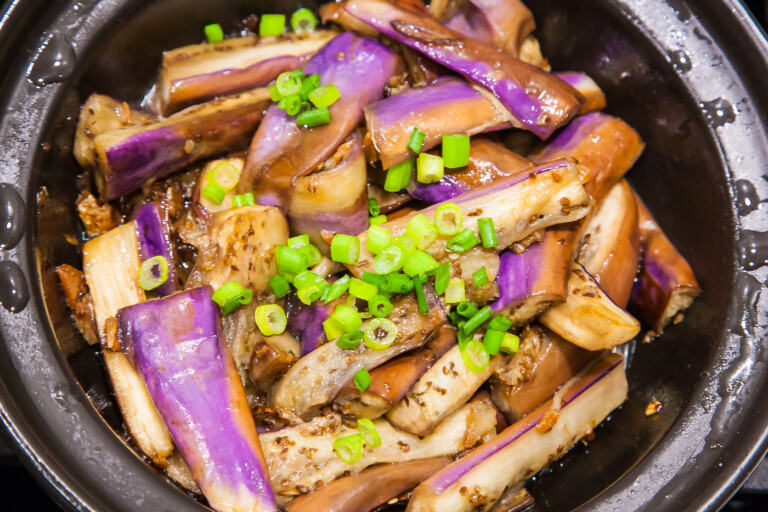
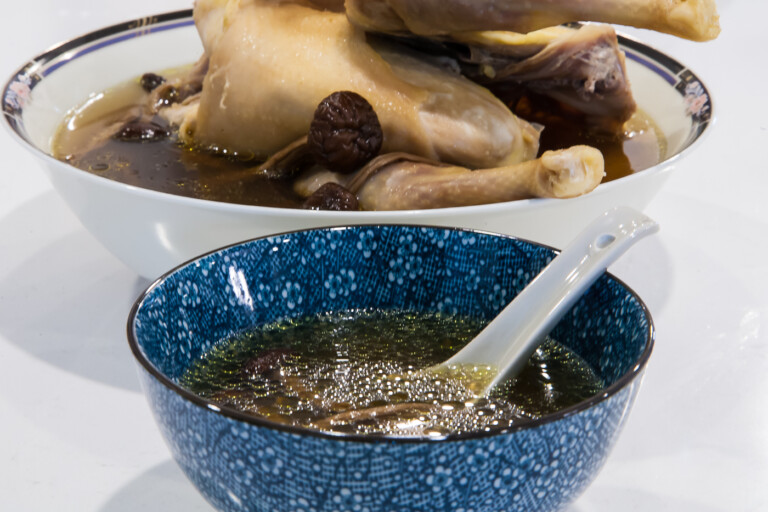
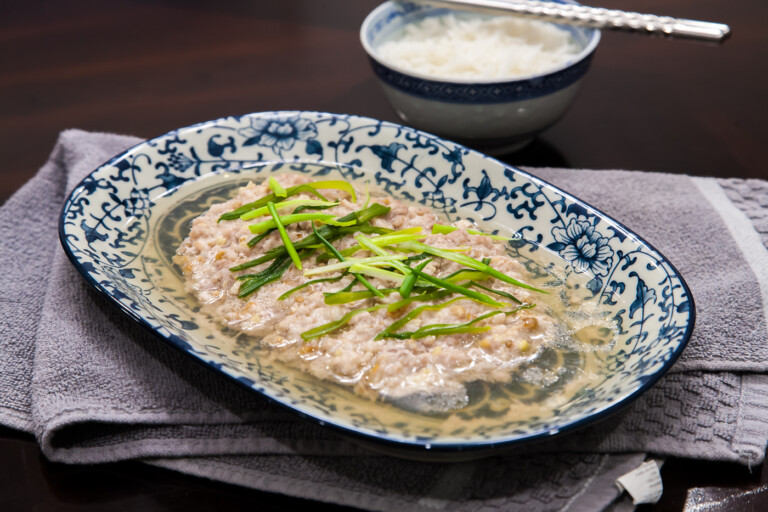
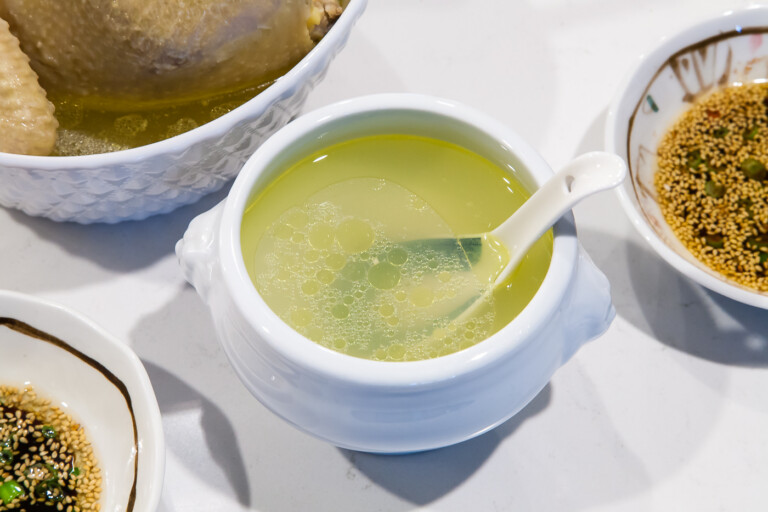
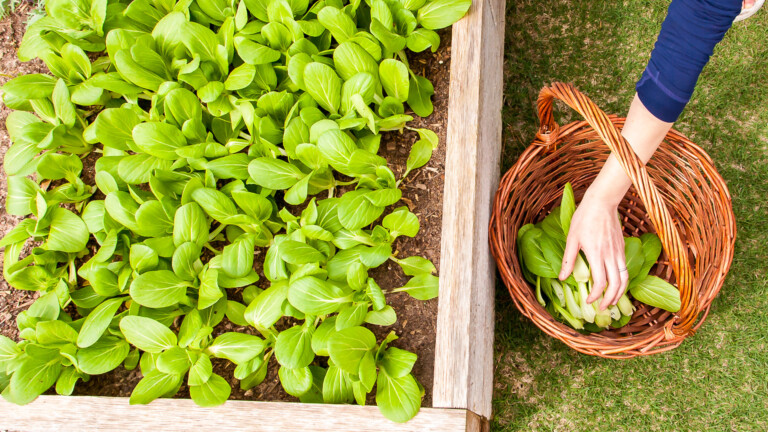
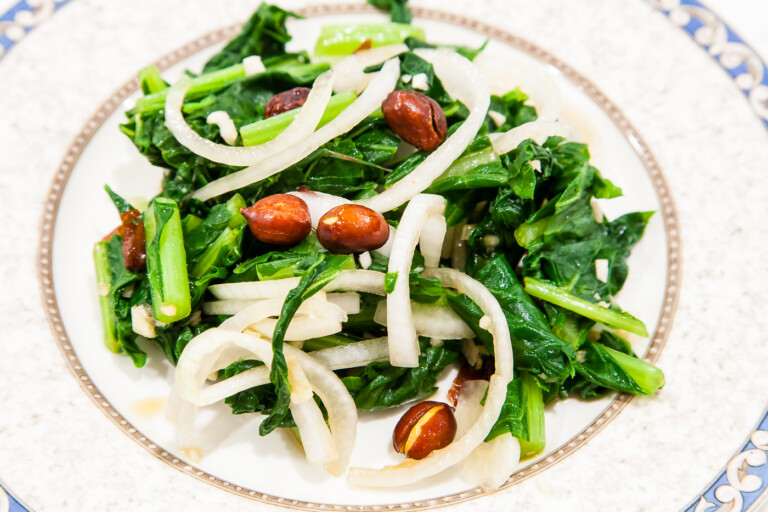
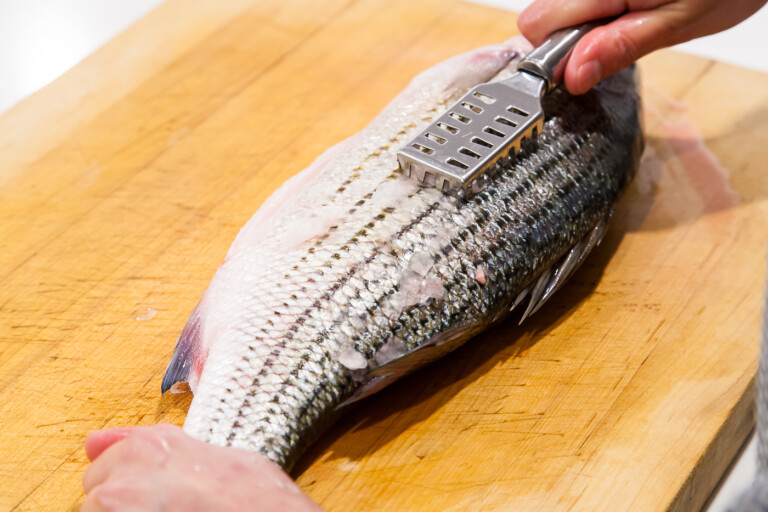
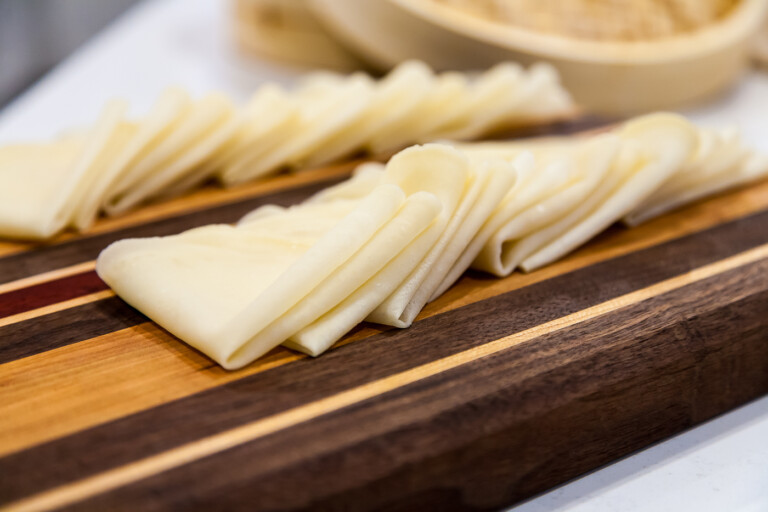
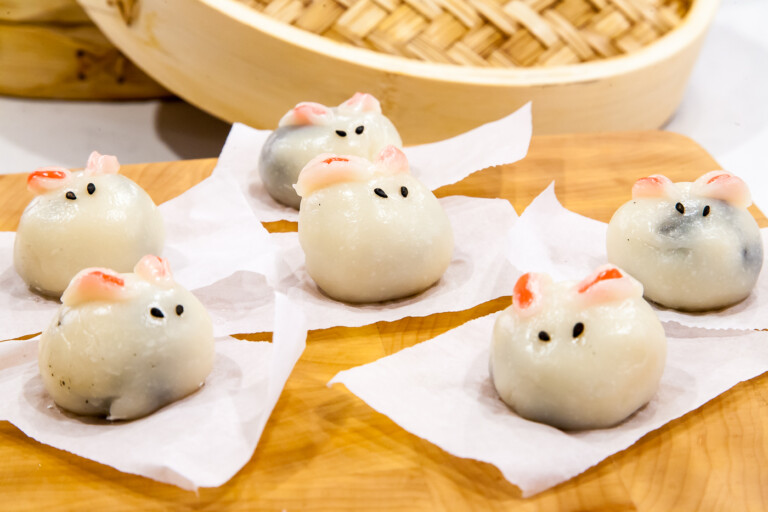
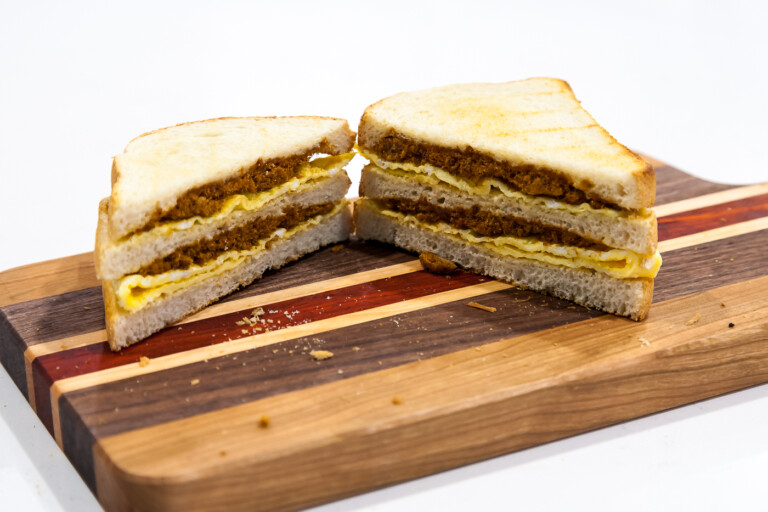

kelly wrote:
love the Chinese chive pockets.
but you have giving the preparation list wrong on the (2 cups of very hot water) should be 1 cup.
I made it and its very yummy.
Thank you.
Kelly
AsianCookingMom wrote:
Thanks! I fixed it in step 1. Hopefully it didn’t cause you any inconvenience. Since you’re slowly adding the water, I guess it was obvious that 2 cups was too much.
I’m glad it turned out well. Thanks for trying my recipe!
Also, I can’t believe you made this so soon after I shared the recipe. I’m flattered to tears.